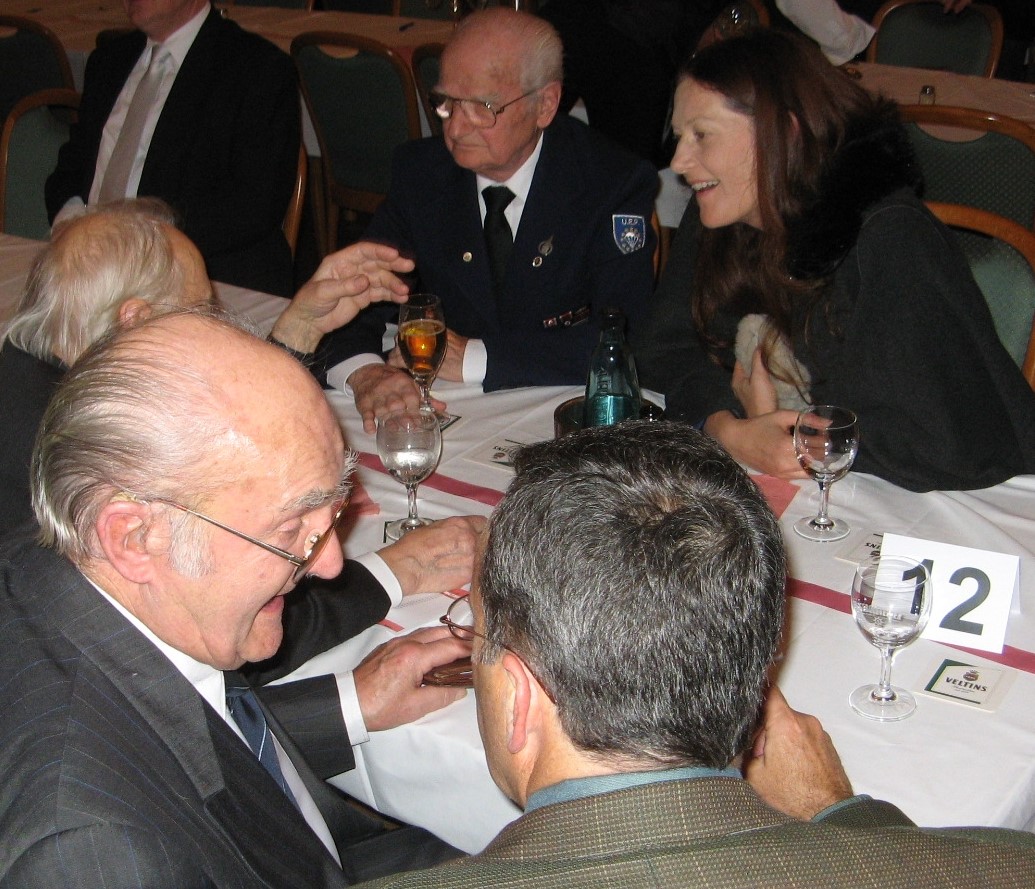
First Meeting
Tank Veterans' GatheringGetting to know Karl Friedrich ``Charley`` Koenig at a veterans' reunion in Germany in 2010. In the foreground, Knights Cross holder Guenter Halm of Africa Corps.
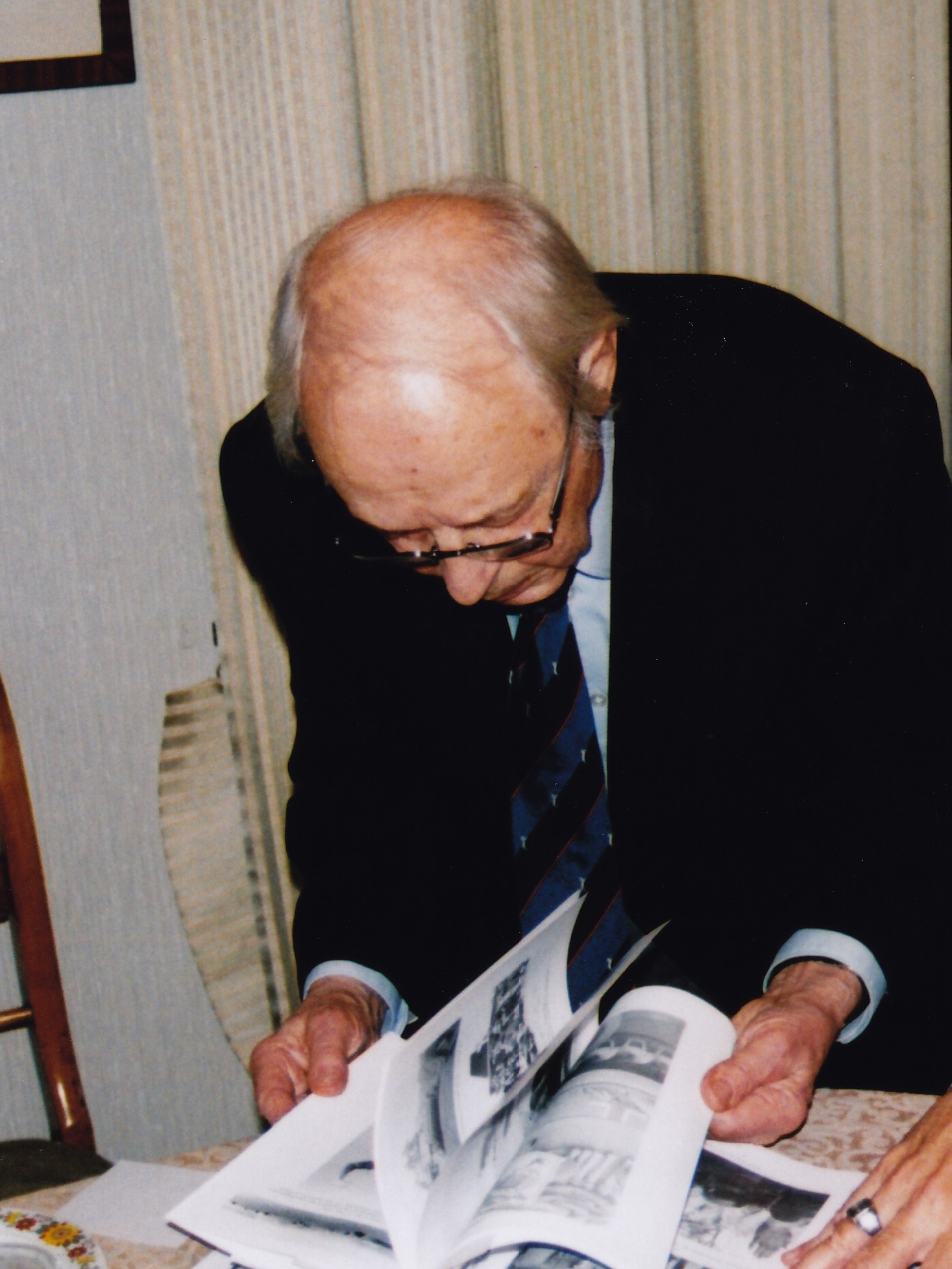
First Interview
HamburgA 7-hour-long marathon interview session with Charley, who was 86, in his home in Hamburg a few days after meeting him. Charley served with the 5th Panzer Regiment of the 21st Panzer Division in Africa Corps in Tunisia in 1943. He fought both the British and the Americans before Africa Corps was forced to surrender. He became a POW in Africa, the US, Belgium and the UK, and returned home to Hamburg in 1947. In 1990, he reached out to his former British Desert Rat enemies who became some of the best friends of his life.
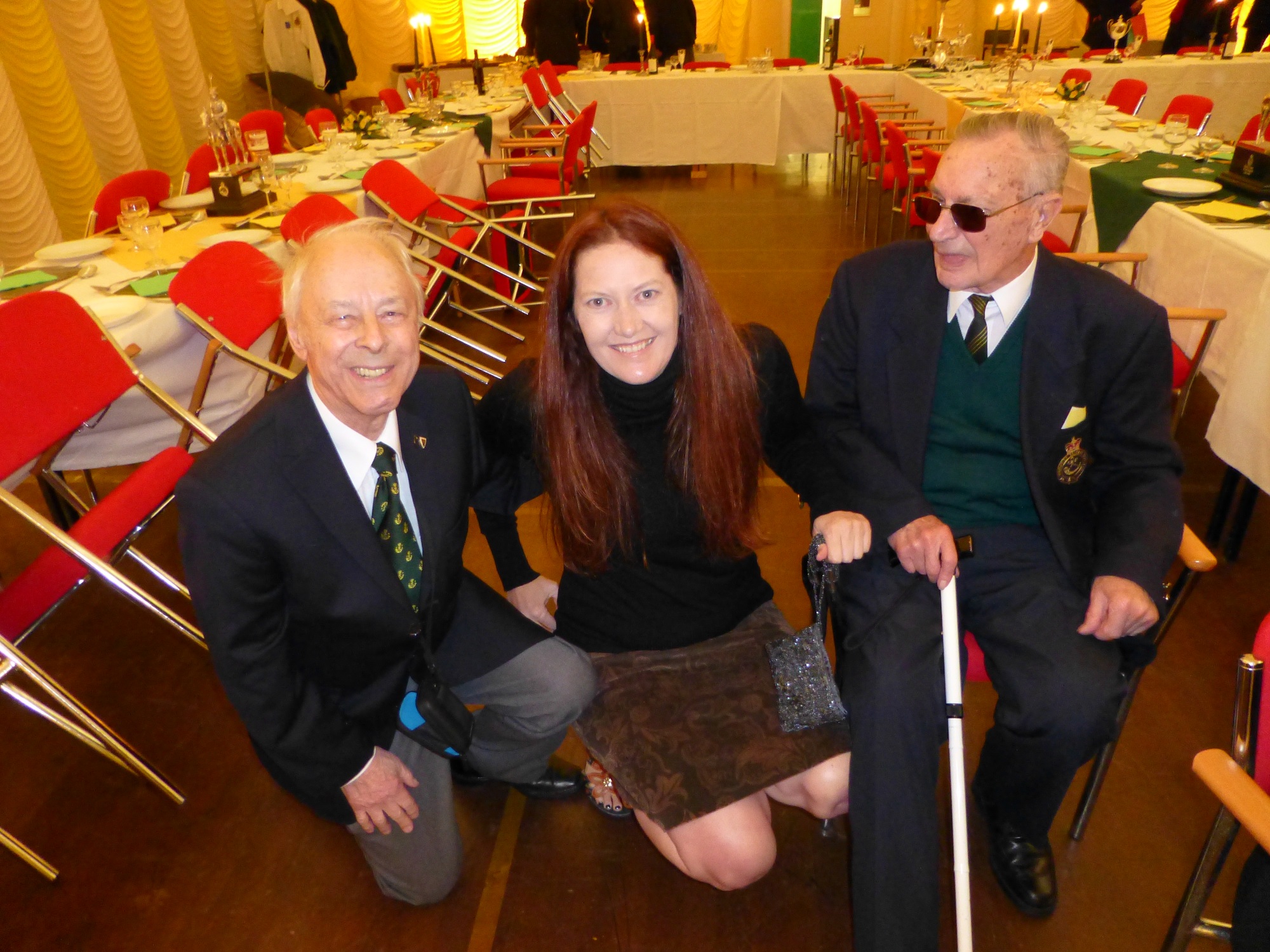
2012 Visit to England
Sherwood Rangers Tank Regiment Regimental DinnerKarl Friedrich ``Charley`` Koenig's former enemies from the Desert War welcomed him to their regimental dinners as a member of their regiment.
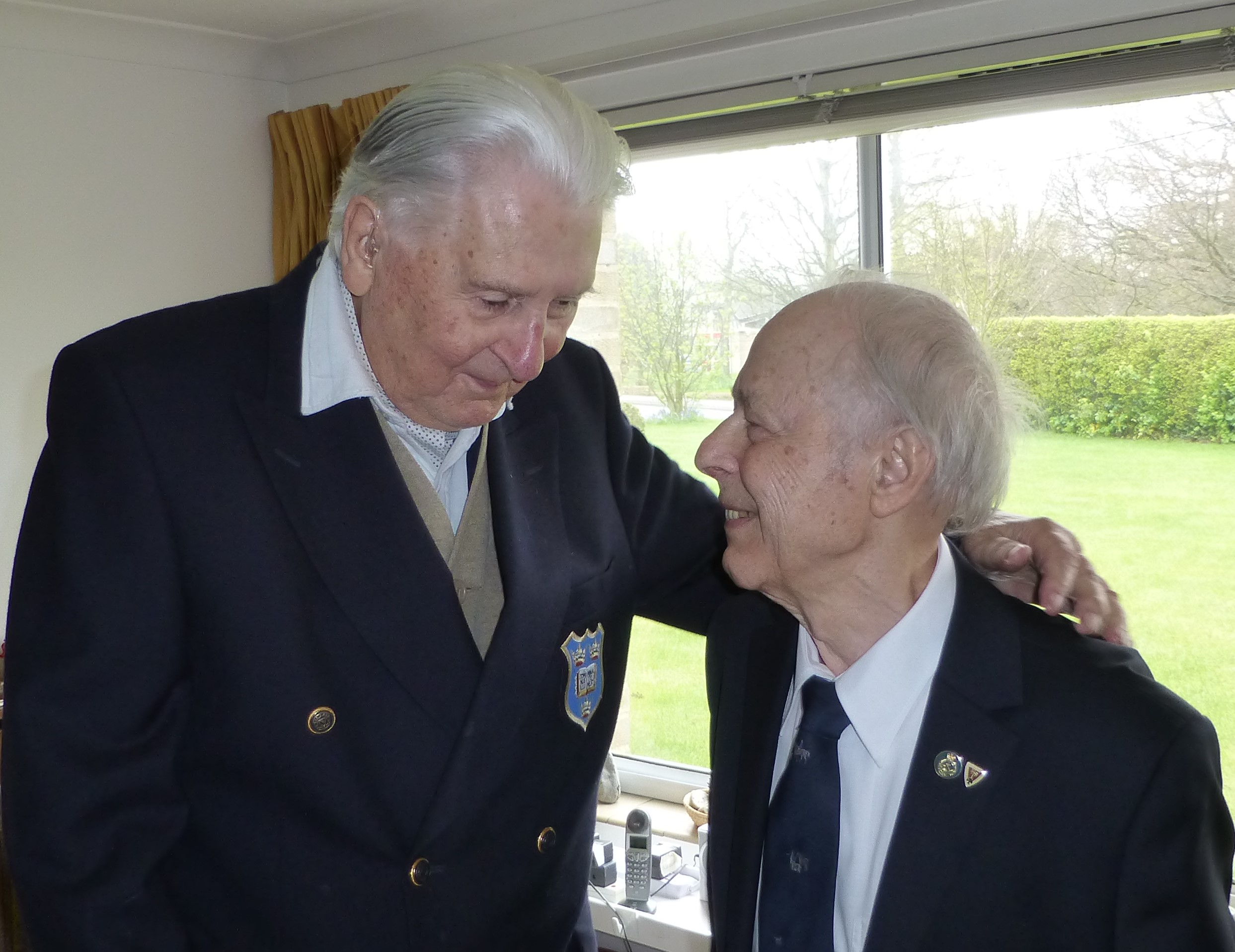
Interviewing Sherwood Rangers Tank Regiment Veterans
John Semken, Military Cross, Silver StarAfter the regimental dinner in Nottingham, we travelled to visit John Semken, a veteran of the African Campaign. John spoke with us about his time fighting the Germans, his admiration of their courage and his fighting spirit, and his welcoming of Charley into the Sherwood Rangers Old Comrades Association.
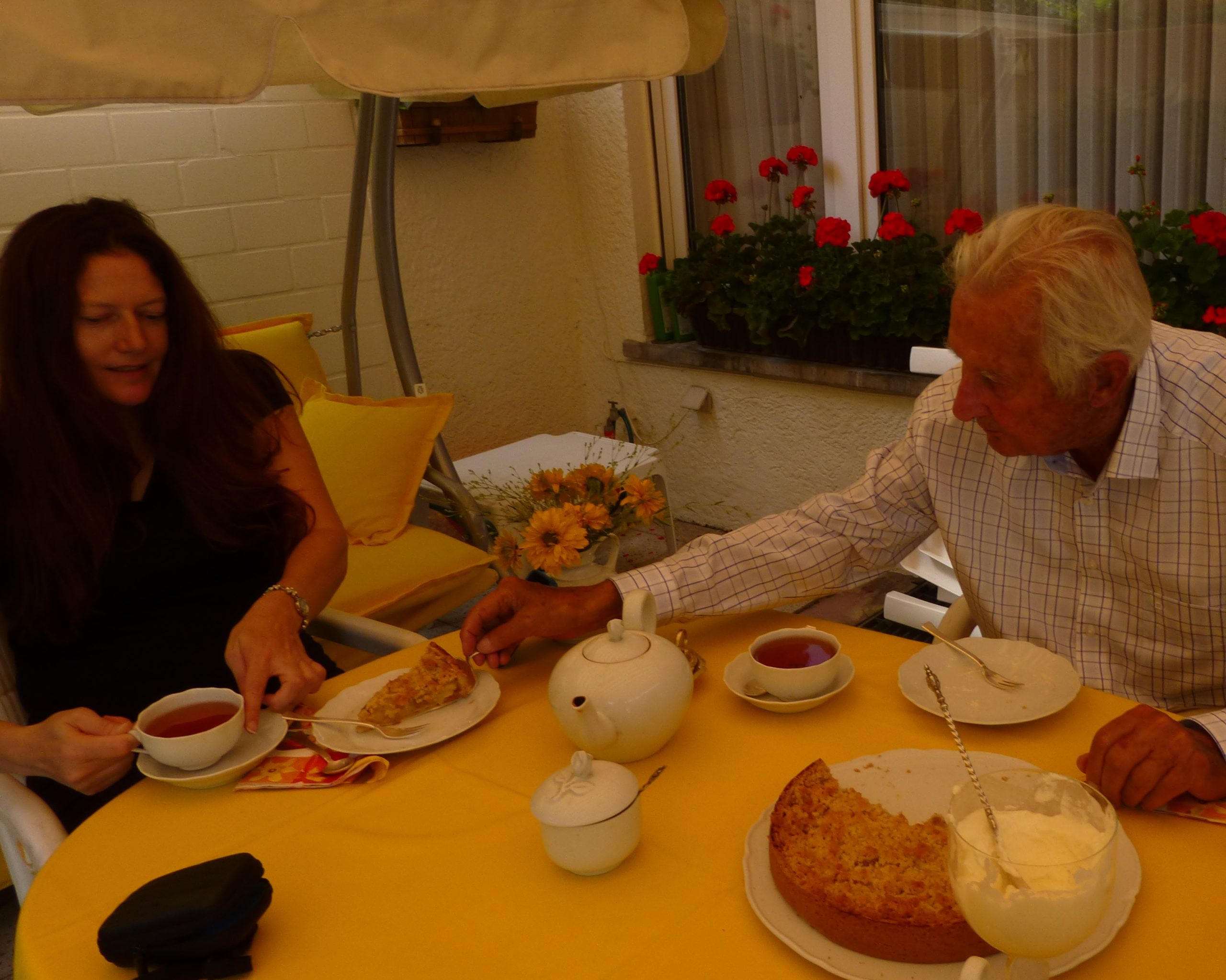
2012: A Summer of Interviews
Tank Commander Egmont FortunEn route visiting veterans throughout Germany, we stopped and interviewed Charley's Tank Commander Egmont Fortun, who fought in the 7th Panzer Division in 1940 in France and in 1941 in Russia, and the 21st Panzer Division in Africa in 1942 and 1943.
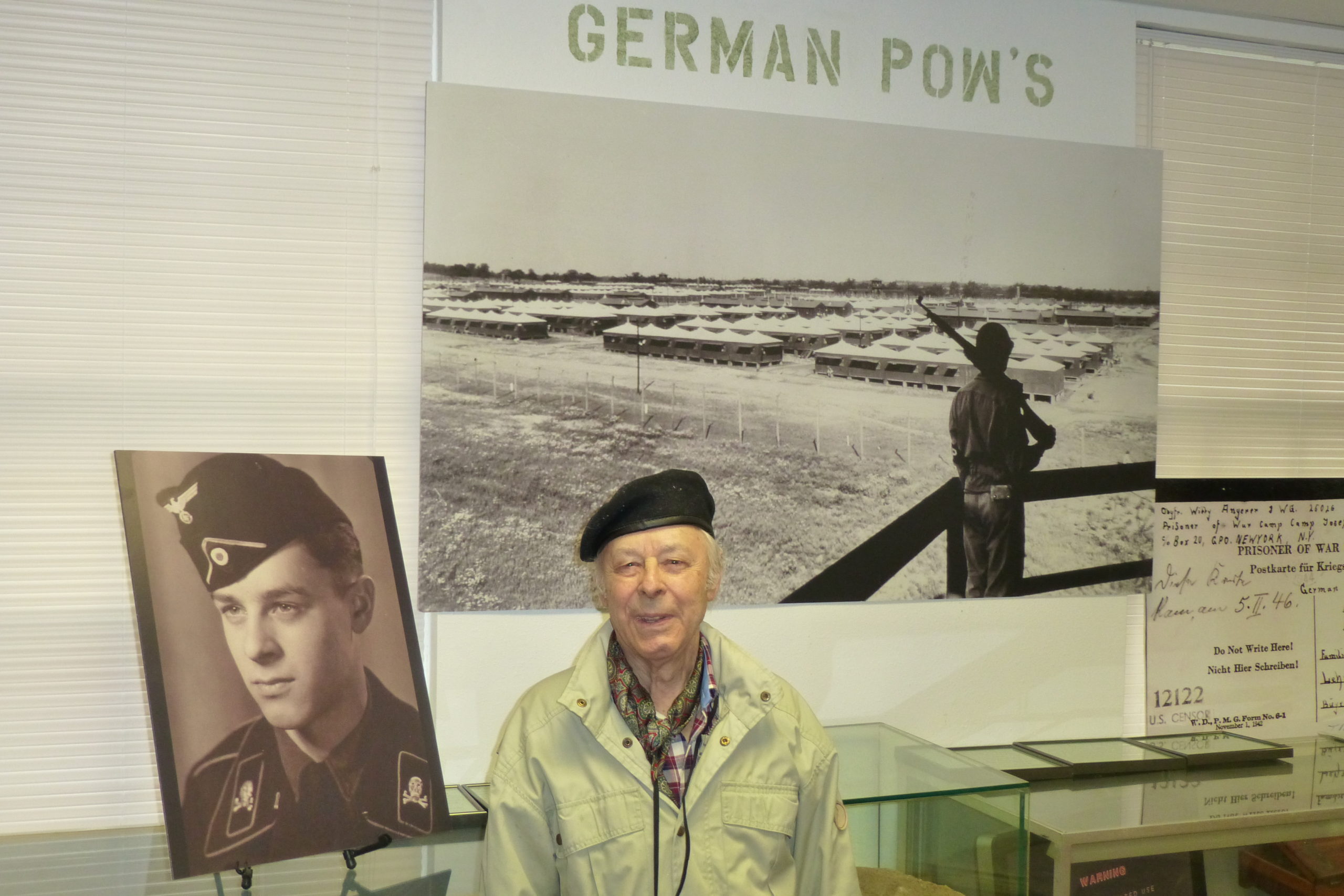
A Trip to the USA in 2013
Camp Chaffee, ArkansasCharley Koenig's first POW camp in the US was Camp Chaffee, Arkansas. In honor of his visit, the Camp Chaffee museum put on an exhibit of the German POW camp complete with a picture of Charley as a 19-year-old in the Wehrmacht panzer uniform.
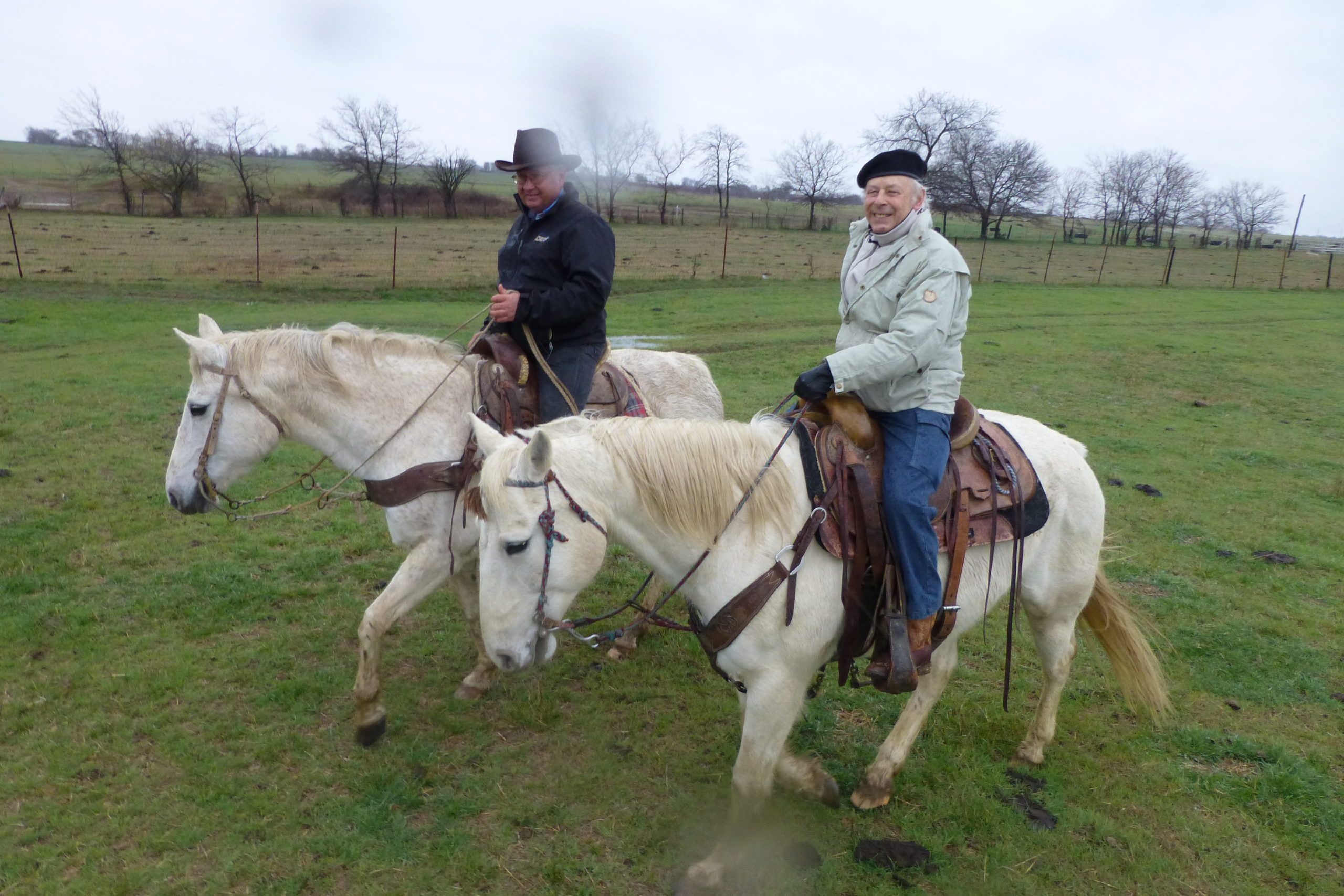
A Trip to the USA in 2013
Okmulgee, OklahomaCharley and I visited the ranch in Okmulgee where he worked as a German POW translator. During the war, kind-hearted ranch owner Doc Watson let Charley ride one of his horses onto the prairie, where Charley could feel free, and not as a prisoner, for a couple of hours. And although it was freezing and raining on the day of our 2013 visit, 89-year-old Charley rode out on the prairie again, envisioning those days of his youth.
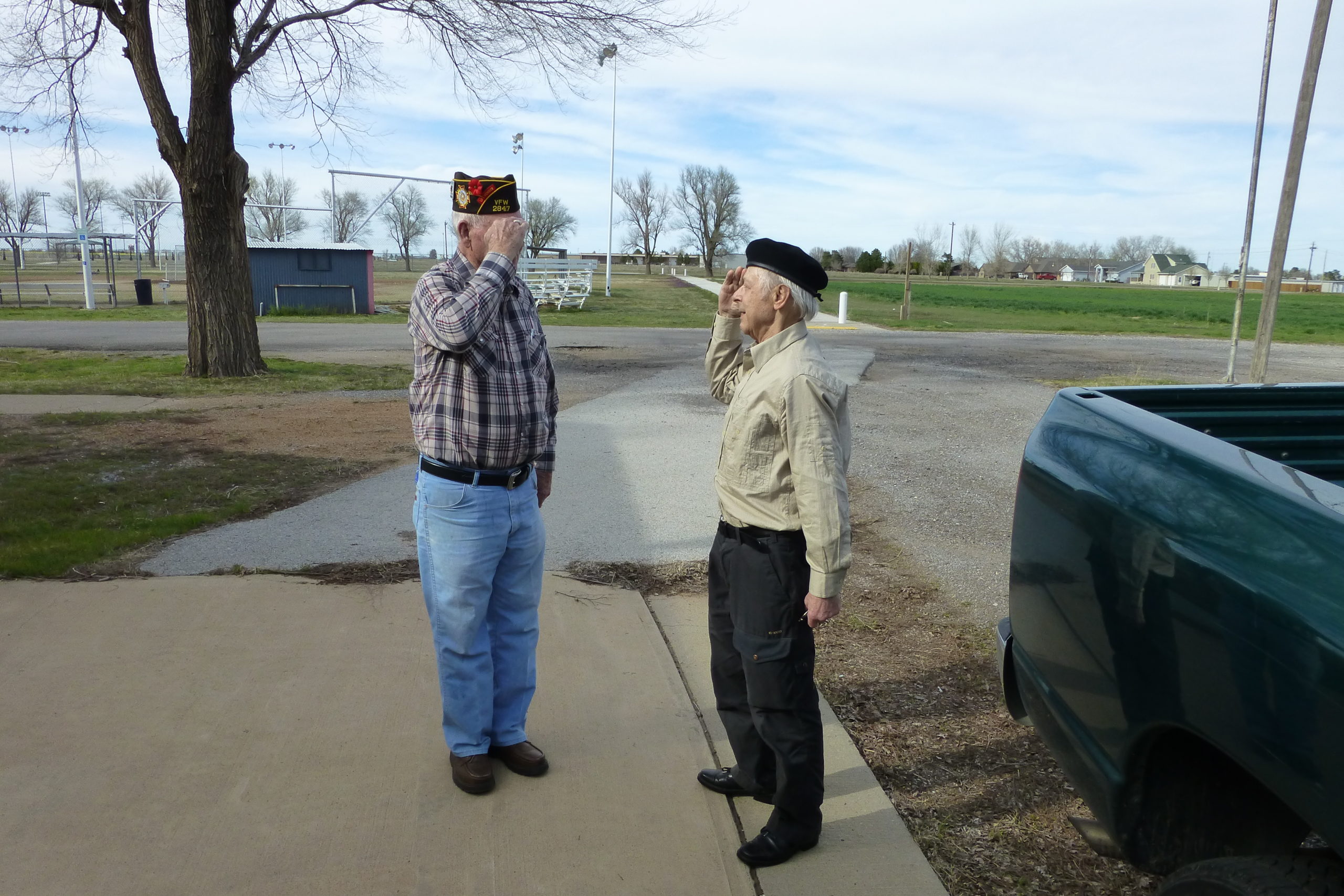
A Trip to the USA in 2013
Alva, OklahomaCharley spent some time in the POW camp in Alva, Oklahoma in 1944 and 1945, where he worked as camp translator. In 2013, we visited the museum in Alva, which has an amazing collection of items left behind by the German POWs, and walked the grounds with an American tanker. Deep honor and respect on both sides.
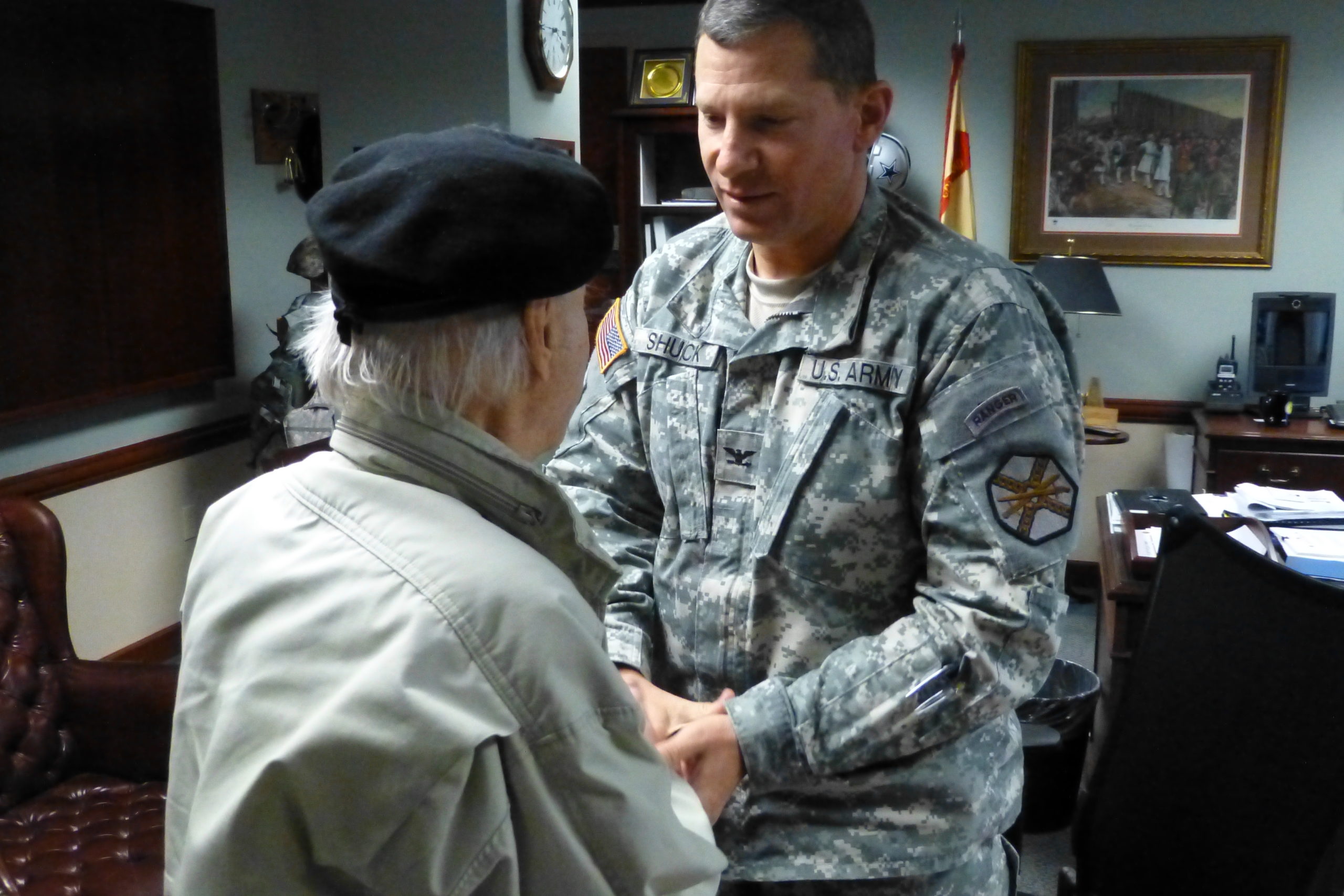
A Trip to the USA in 2013
Fort Polk, LouisianaA warm welcome awaited us at Fort Polk, Louisiana. The museum curator showed outstanding hospitality to us, spoke German with Charley, and arranged for media coverage and a visit with the base Commander, who honored Charley with the gift of a challenge coin.
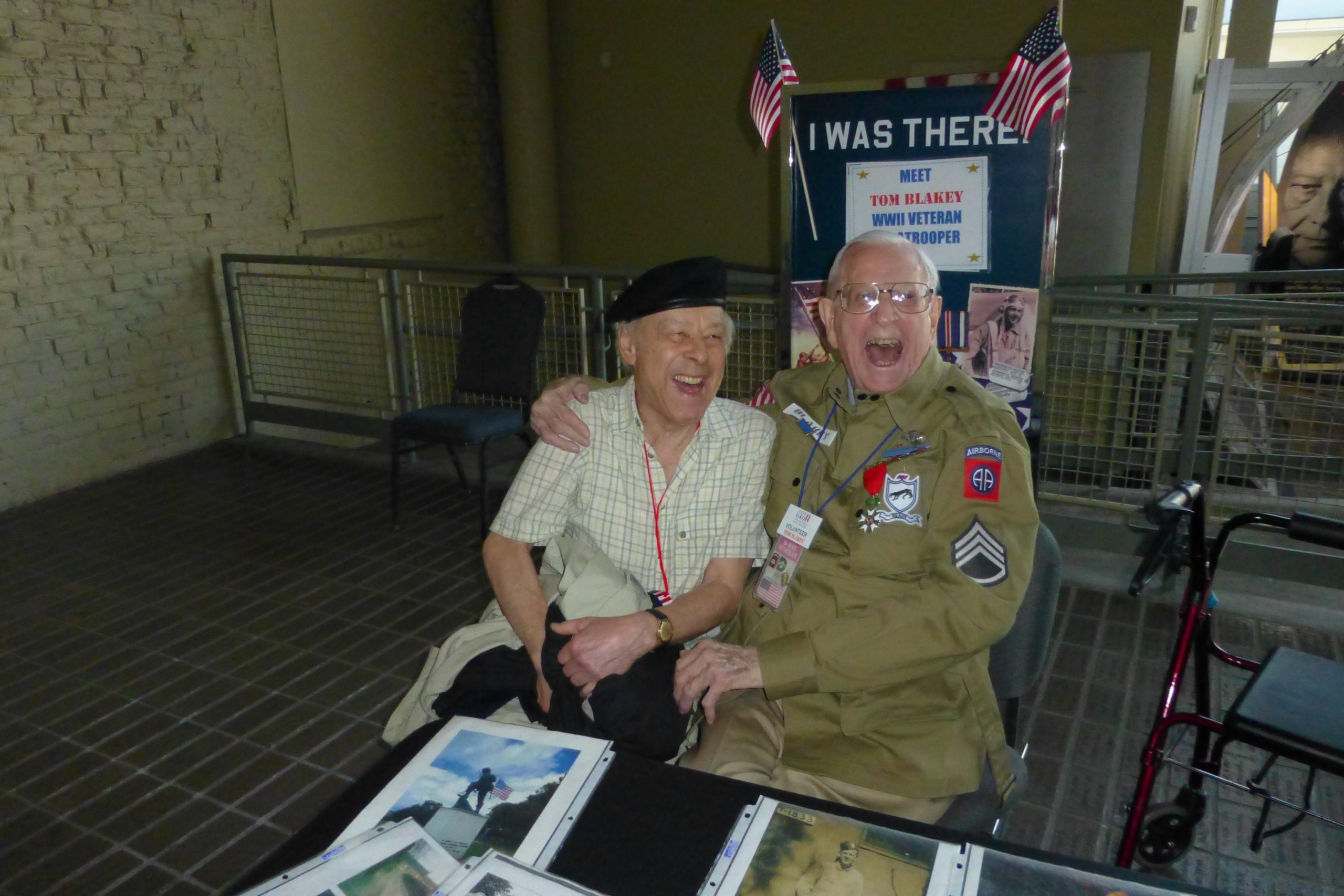
A Trip to the USA in 2013
World War II Museum New OrleansAt the World War II Museum in New Orleans, Charley was interviewed by a staff historian, we climbed inside their Sherman, and then had an hours-long tour of their weapons' storage room. Charley immediately became friends with American WWII 82nd Airborne paratrooper veteran Thomas Blakey. Another example of Charley's philosophy of reconciliation in word and deed.
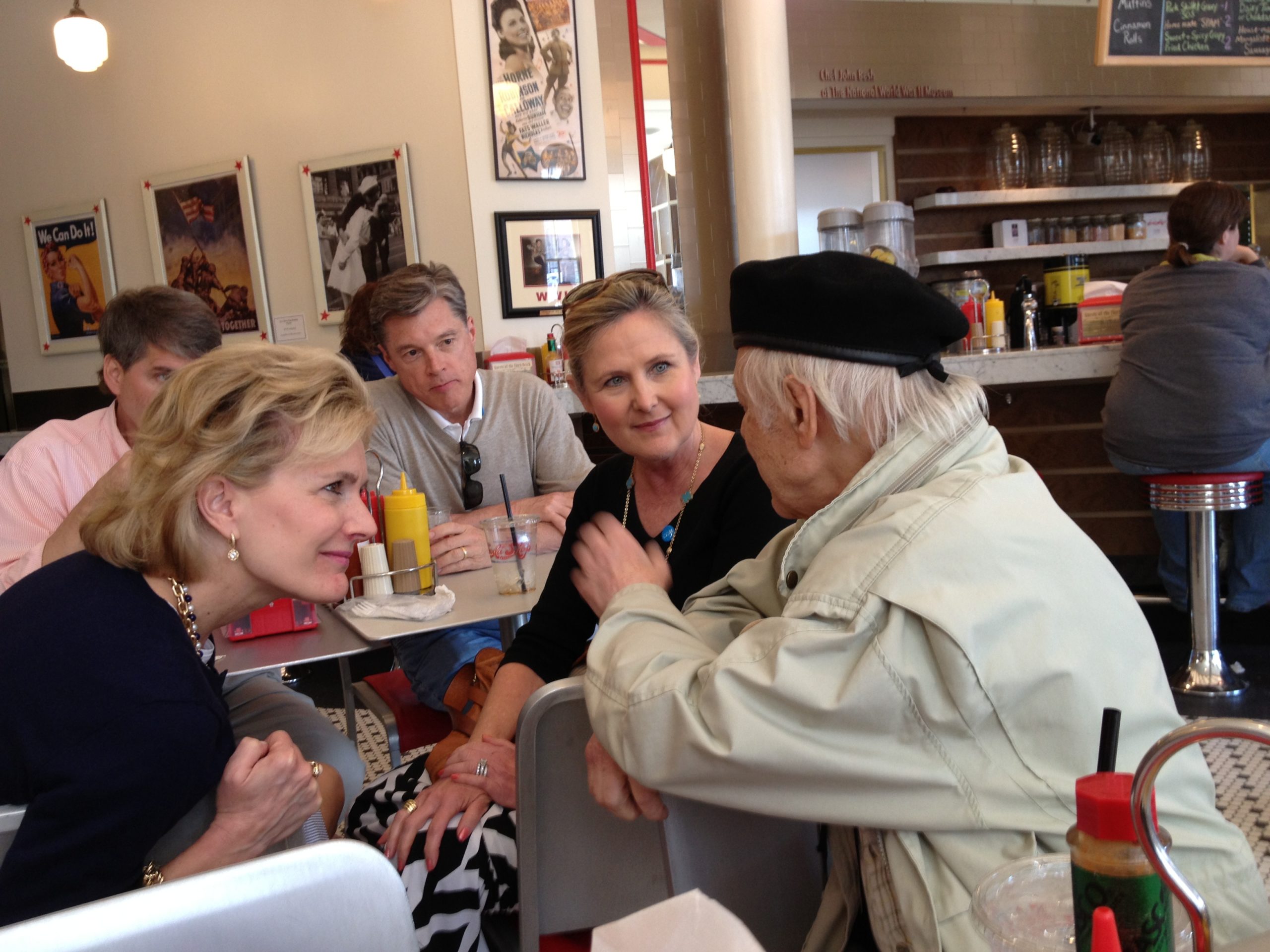
A Trip to the USA in 2013
World War II Museum New OrleansEverywhere we went in the USA, Charley was treated like a rock star. Here, in the cafe at the World War II Museum, American visitors listen intently as Charley talks about his wartime service as a tanker in Rommel's Africa Corps
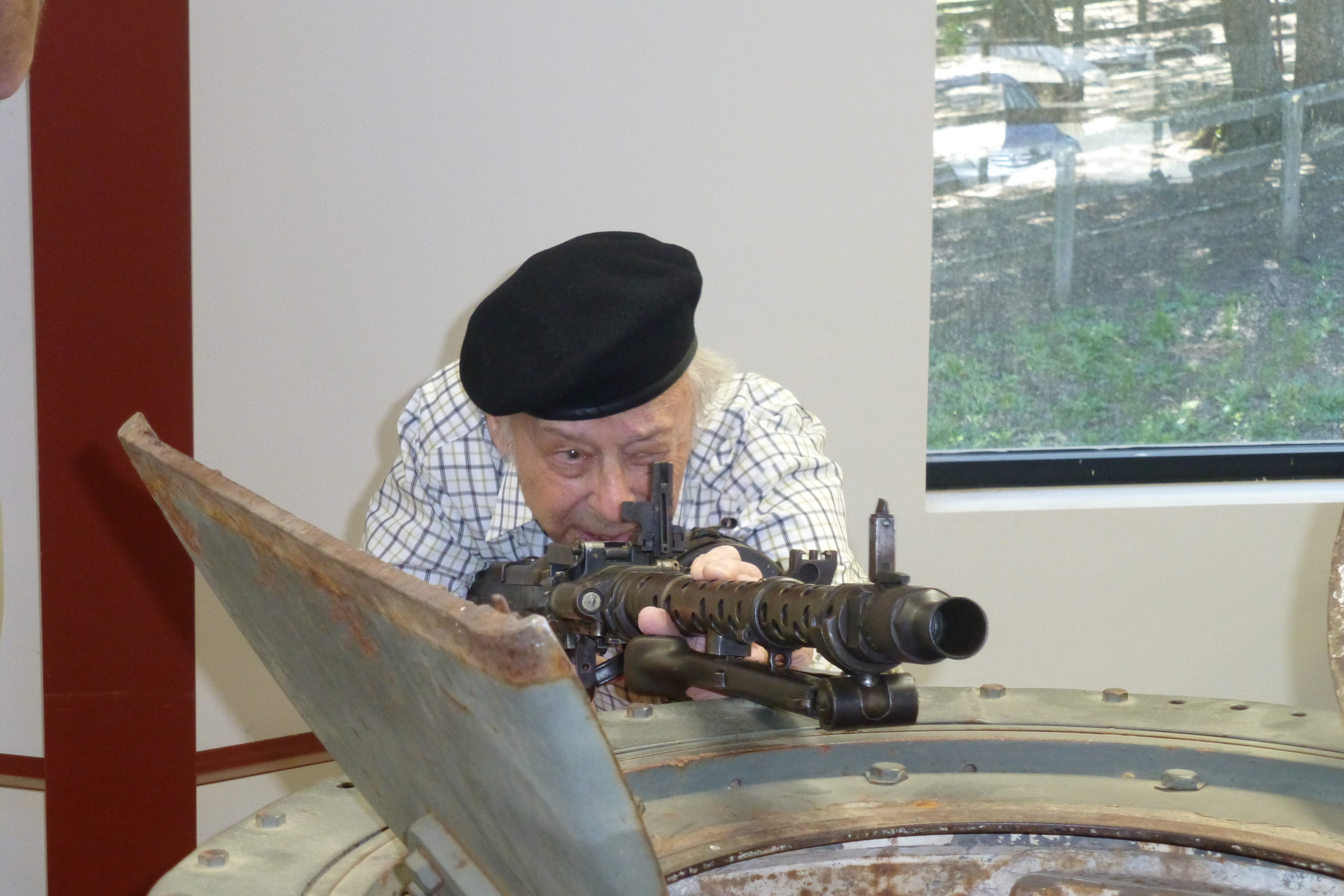
A Trip to the USA in 2013
Jacques Littlefield Armored Vehicle CollectionWe were honored guests at the private armored vehicle collection of the late Jacques Littlefield, and given a tour of all the vehicles in the facility and allowed full access to the weapons, as well as tanks' exteriors and interiors, including the Panzer IV and the pristine Panzer V. Here Charley has placed an MG34 on the turret of the Panzer IV and is showing us how he shot at tank-busting Hurricanes in March 1943.
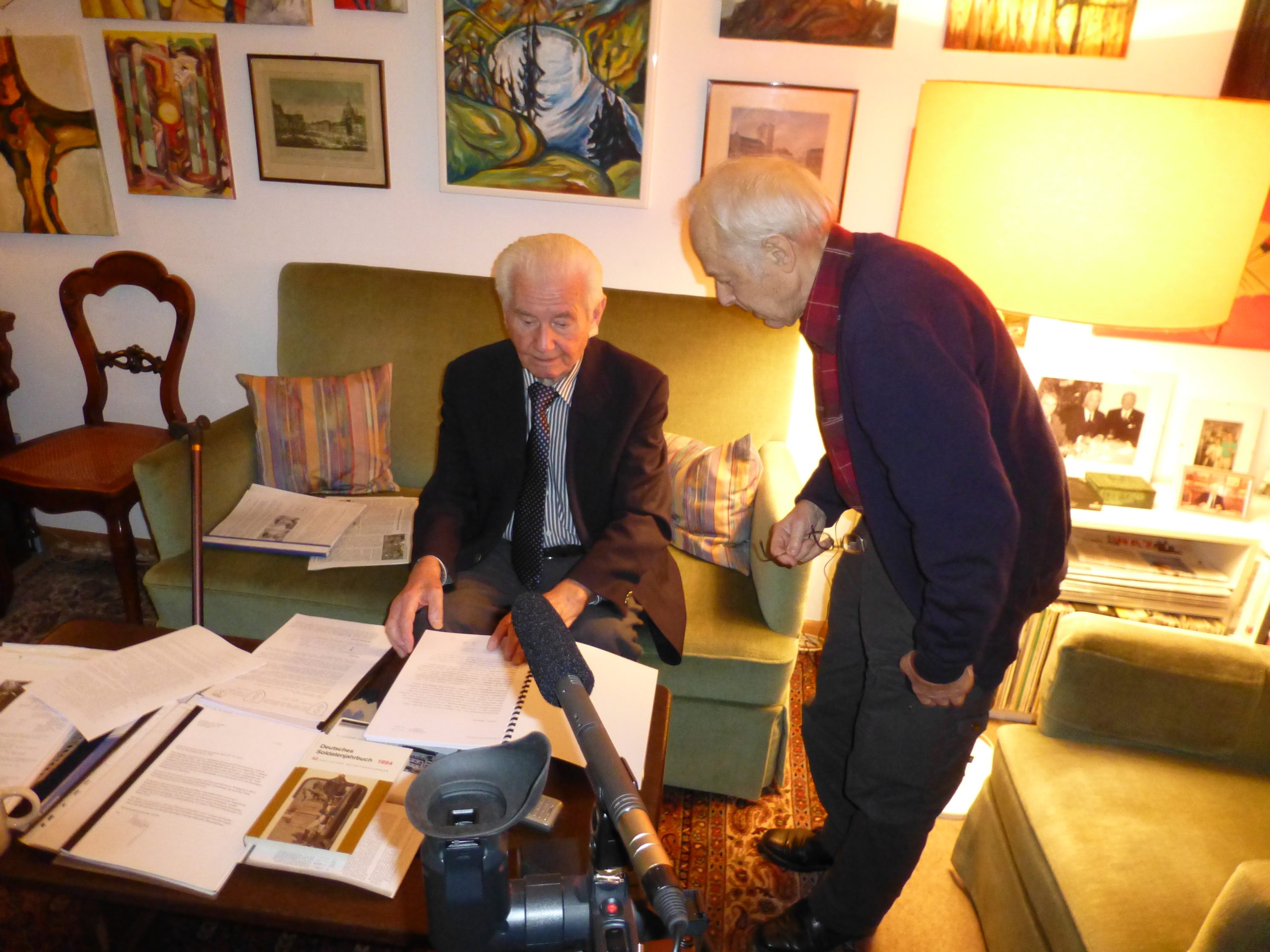
Conducting Veteran Interviews in 2013
GermanyCharley and I travelled around Germany 2-4 months a year between 2010 and 2015, interviewing veterans, visiting battlefields, and researching at archives and museums. He was my WW2 weapons' expert, he read documents in the old Suetterlin script, explained cultural references from WW2, and translated when necessary. He established trust with German WW2 veterans, and proved to be an incredible oral history and archival research partner. Here with Erich Klein, 16th Panzer Division.
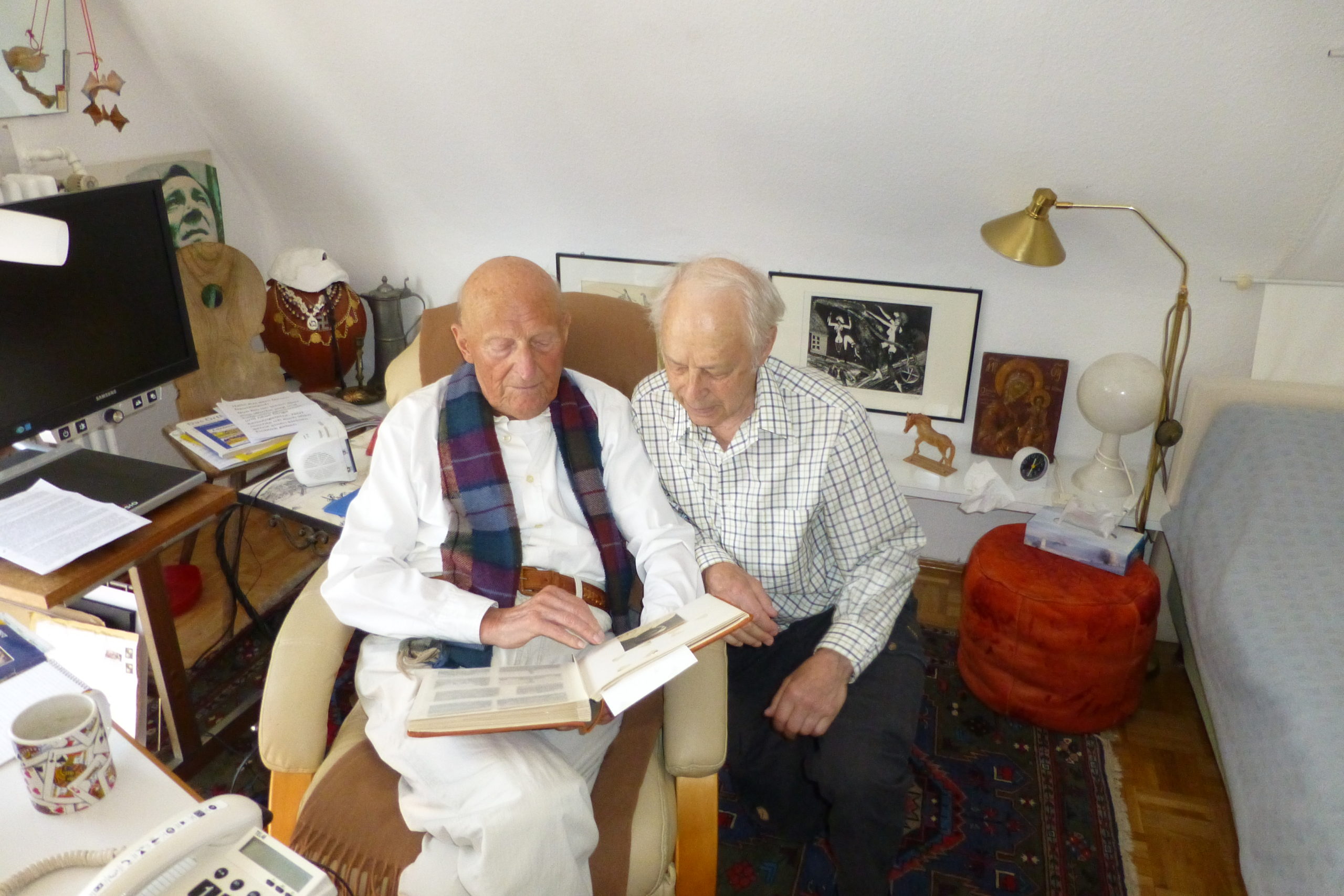
Conducting Veteran Interviews in 2013
Rittmeister Emilio SchulzWith the last German cavalry captain alive in 2013, 99-year-old Rittmeister Emilio Schulz
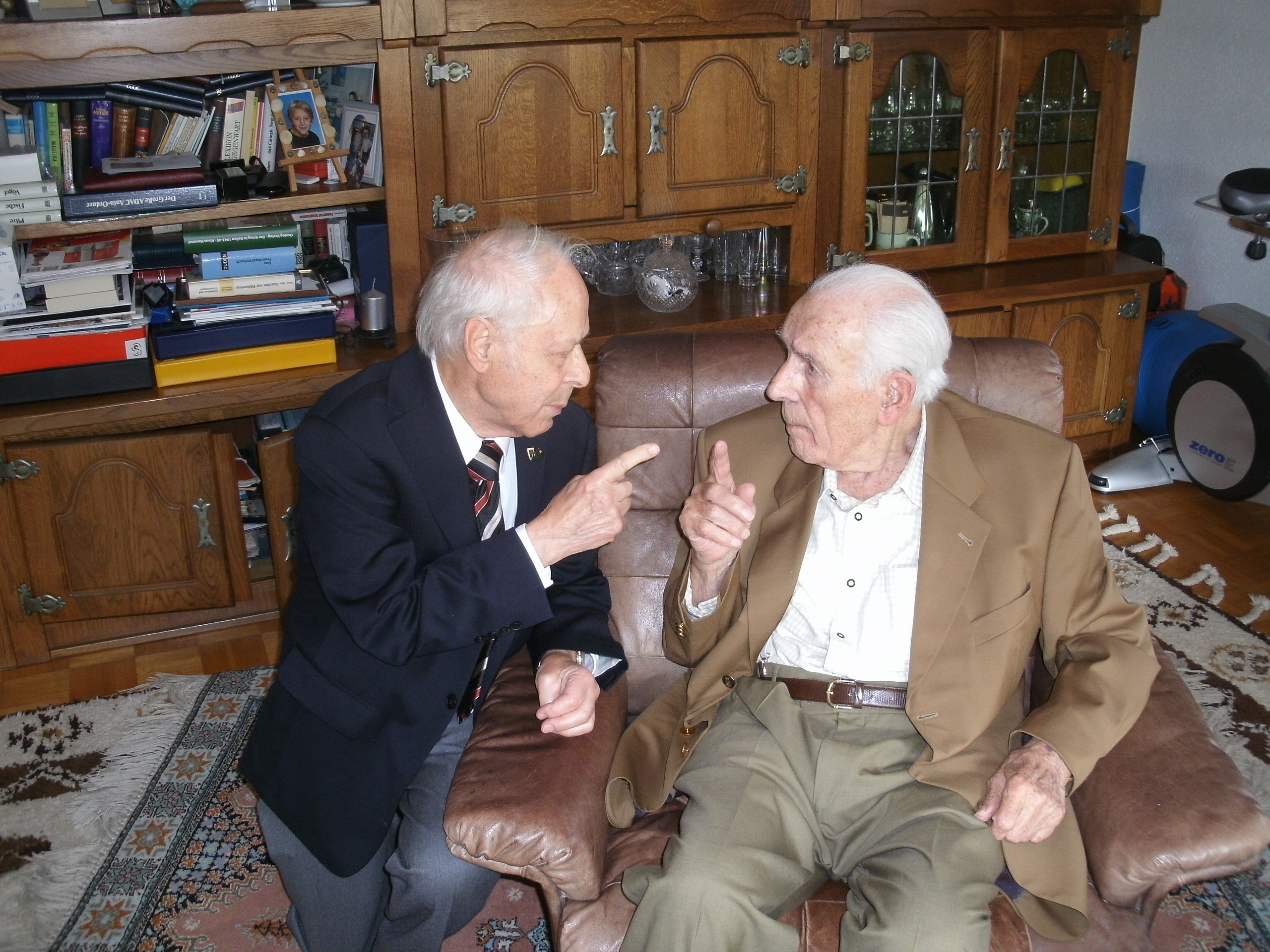
Conducting Veteran Interviews in 2013
Helmut JesererWith 99-year-old Helmut Jeserer, Knights Cross holder in WW2, soldier in the post-war West German Bundeswehr from 1956 until 1971, retired with the rank of Lieutenant Colonel.
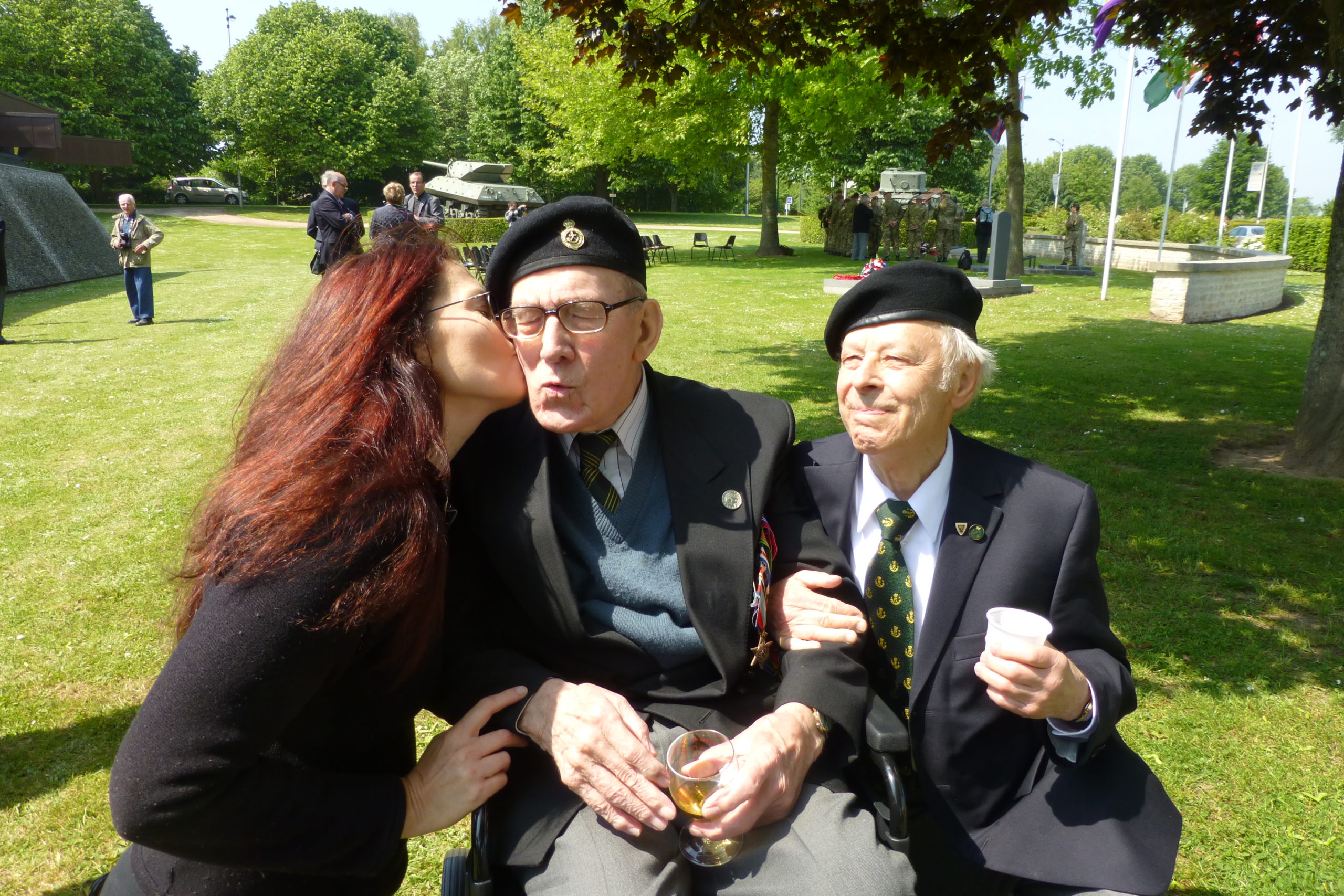
Normandy with the Sherwood Ranger Tank Regiment
D-Day 2013We accompanied the last remaining Sherwood Rangers on a tour starting at Gold Beach, where they came in with swimming tanks on D-Day, through Normandy, and for the ceremony in honor of the liberation of Bayeux on D+1 by the Sherwood Rangers.
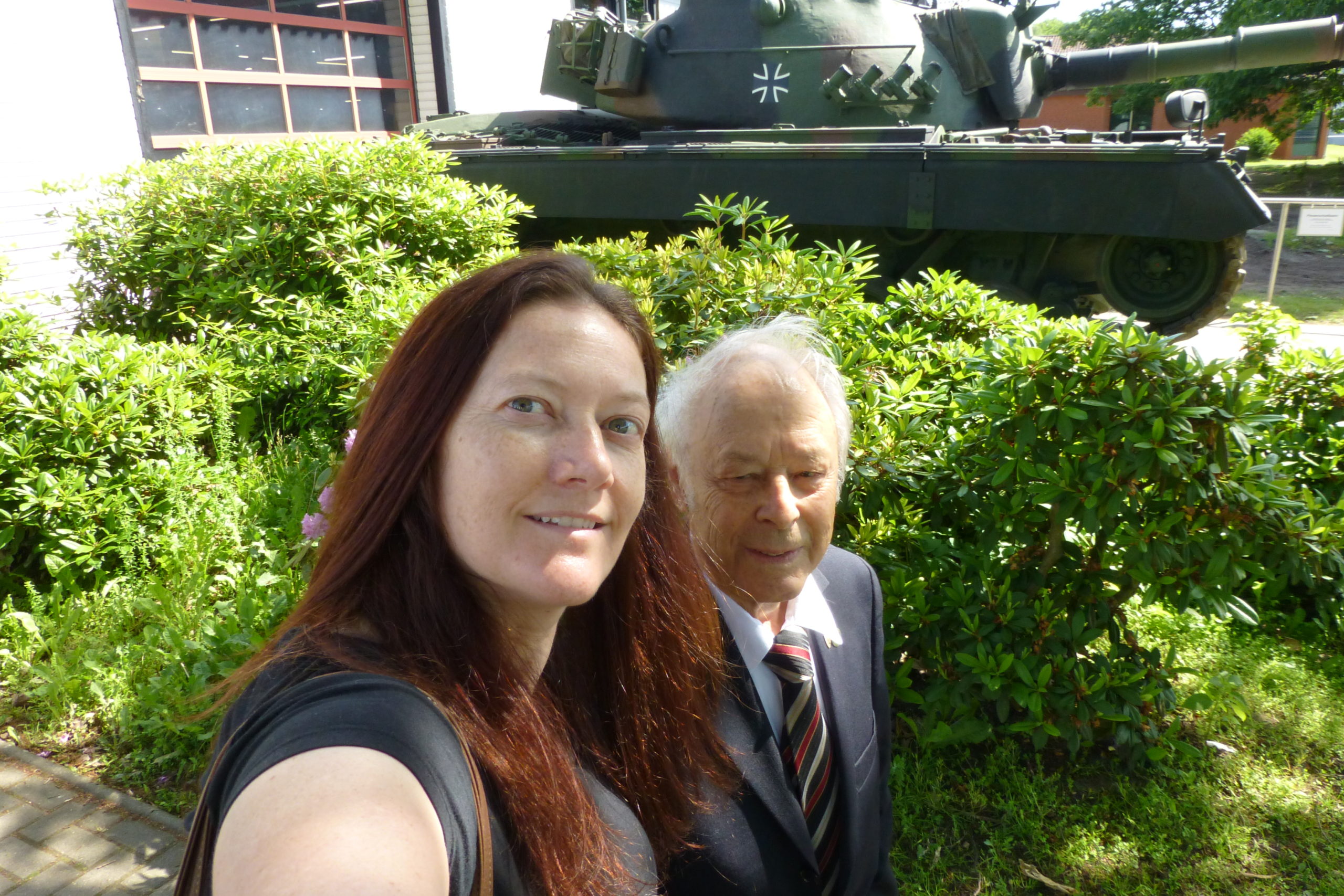
30 Years Panzermuseum
Munster, Germany 2013One of our many visits to the Panzermuseum in Munster, Germany. This time, for their 30th anniversary.
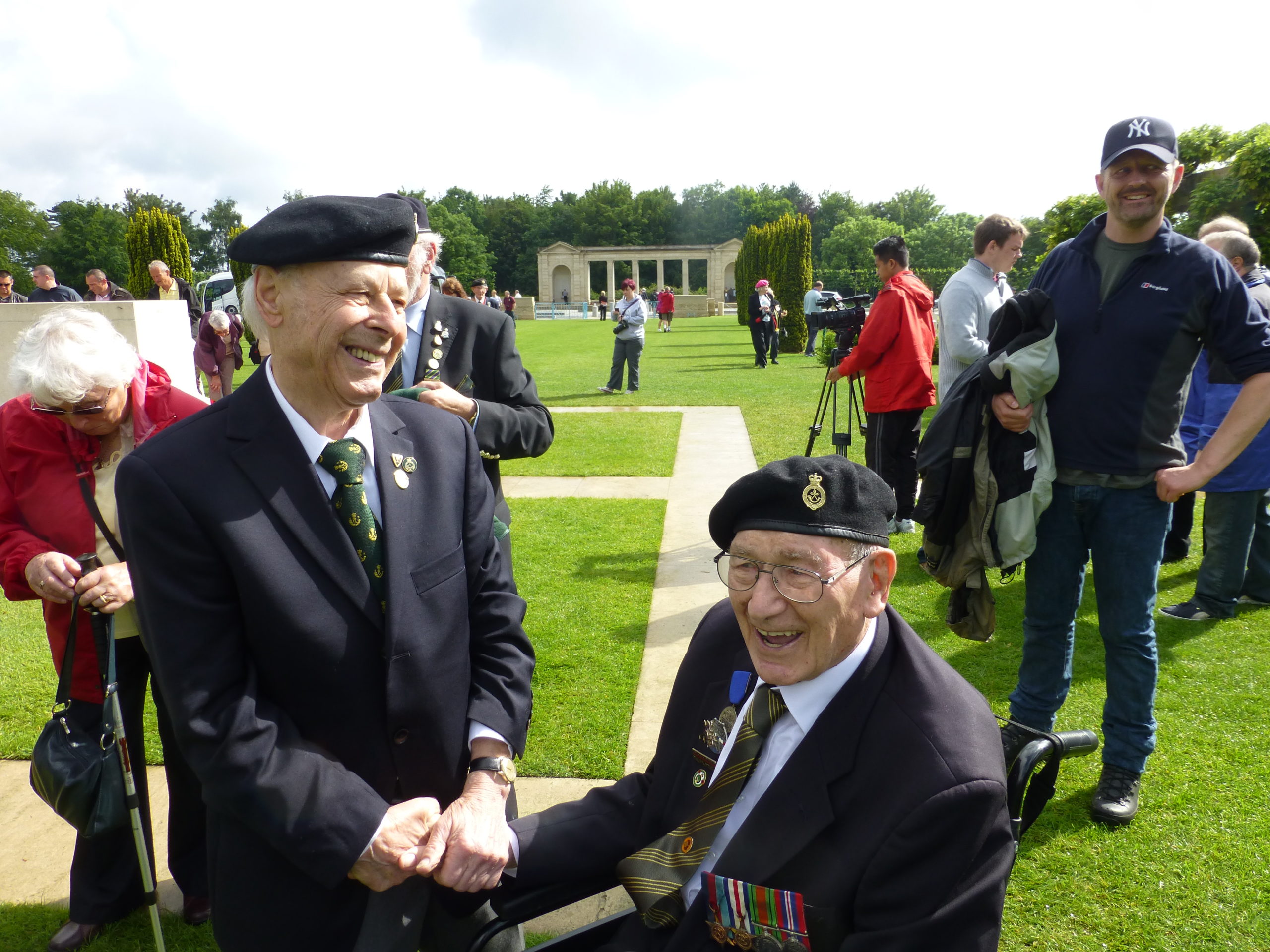
Normandy 2014
Sherwood RangersLoyal Unto Death. That's the Sherwood Ranger Tank Regiment motto, and the thread that bound their decades-long friendship. Here with Stan Cox.
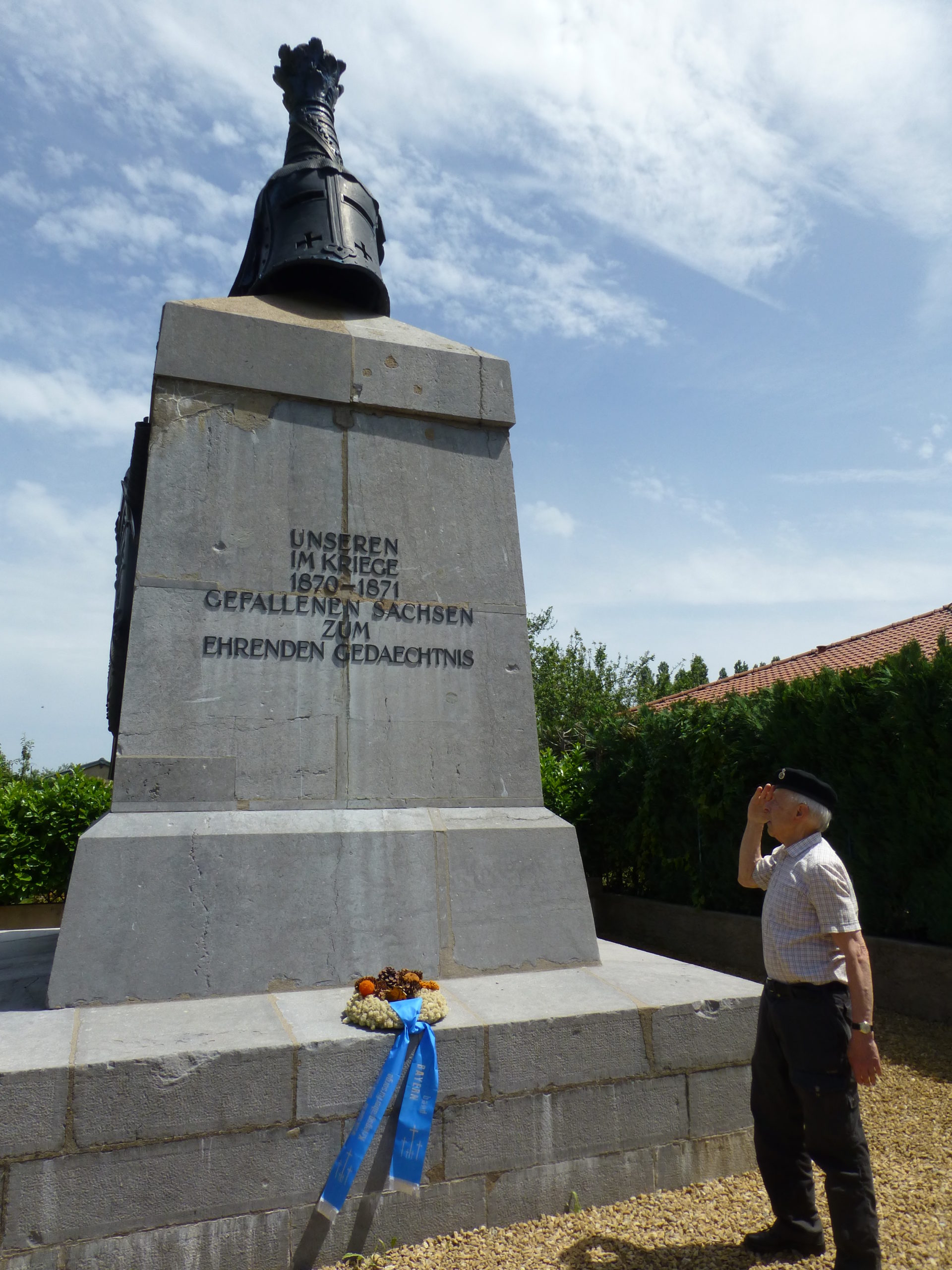
Following in his Grandfather's Footsteps
The 1870-71 Franco Prussian WarCharley's grandfather won the highest award for bravery in the Saxon Army in the 1870-71 Franco-Prussian war. We followed his path through France, stopping at the battlefields where he fought. Here at a monument to fallen Saxons. The French maintain their history, even when they lose. Nothing about this monument, the battlefields, or the cemeteries from 1870-71 had changed in this rural part of France for nearly 150 years.
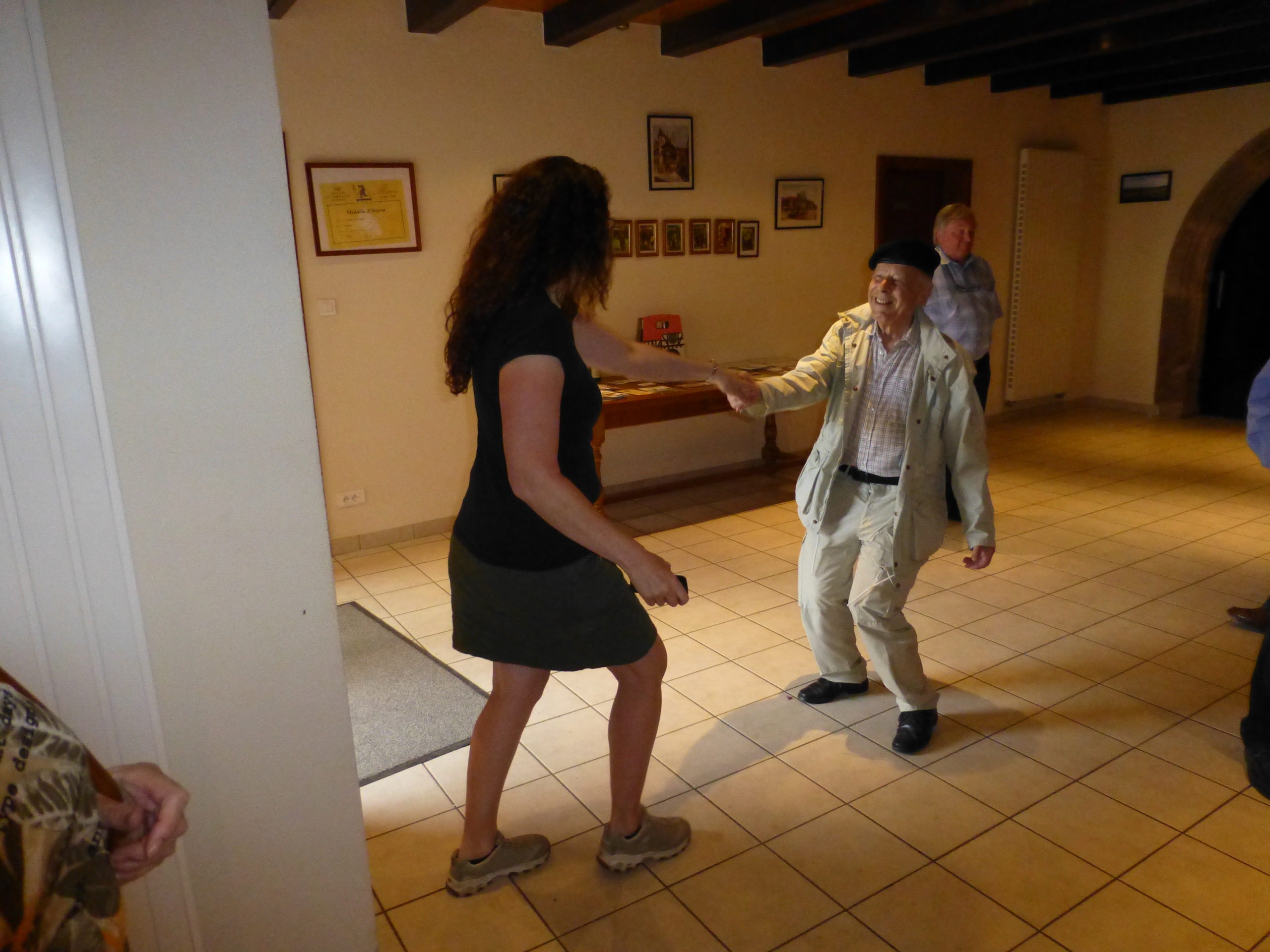
Battlefield/Wine Tasting Tour
Maginot Line, 2014Because when Glen Miller's ``In the Mood`` is playing, you really ought to dance, especially if you are 90 years old.
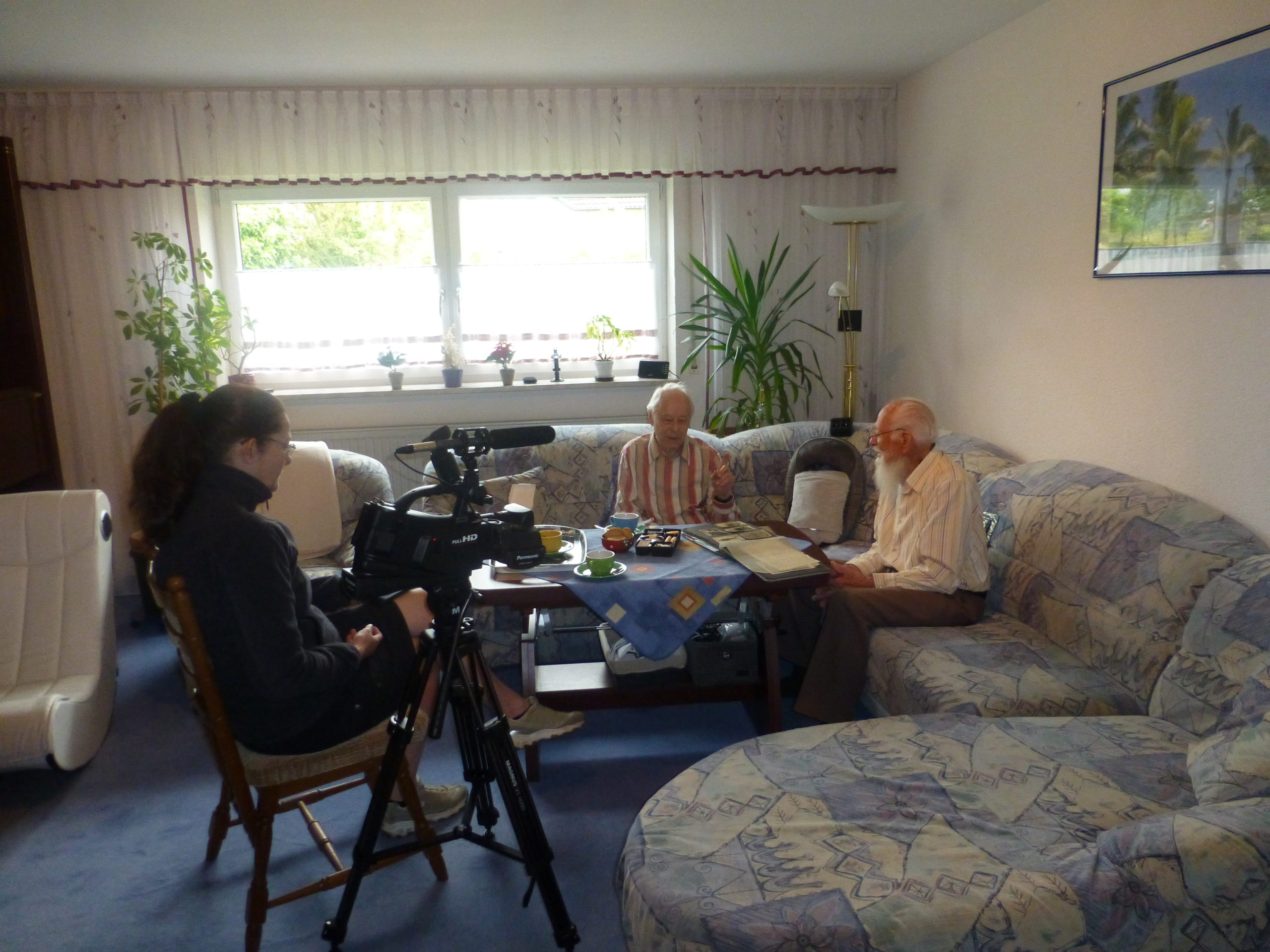
More interviews
Georg FischlBy the end of 2015, I had gathered around 200 interviews - about 100 with American and Allied veterans, and 100 with German veterans. Here we are visiting Georg Fischl, a paratrooper who fought in Normandy in June 1944. Fallschirm Jaeger Regiment 5.
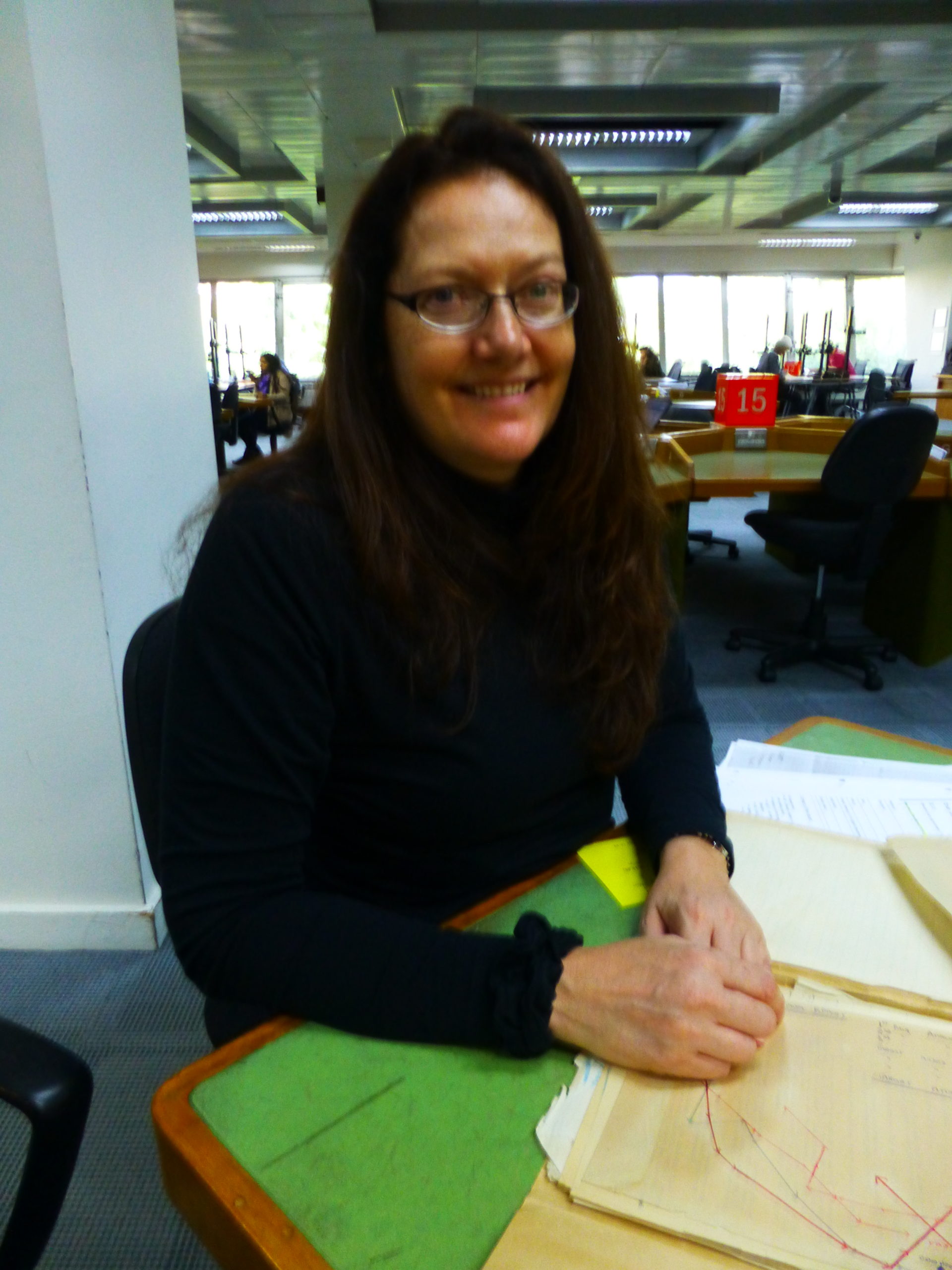
Finding the Archival Records
British National Archives, Kew, 2015Charley and I visited Kew together to research the archival documents connected with his time in Africa. Here, I am looking at a file relating to the South African Hurricane IIDs that hit his tank at the Mareth Line in March of 1943. Charley is behind the camera.
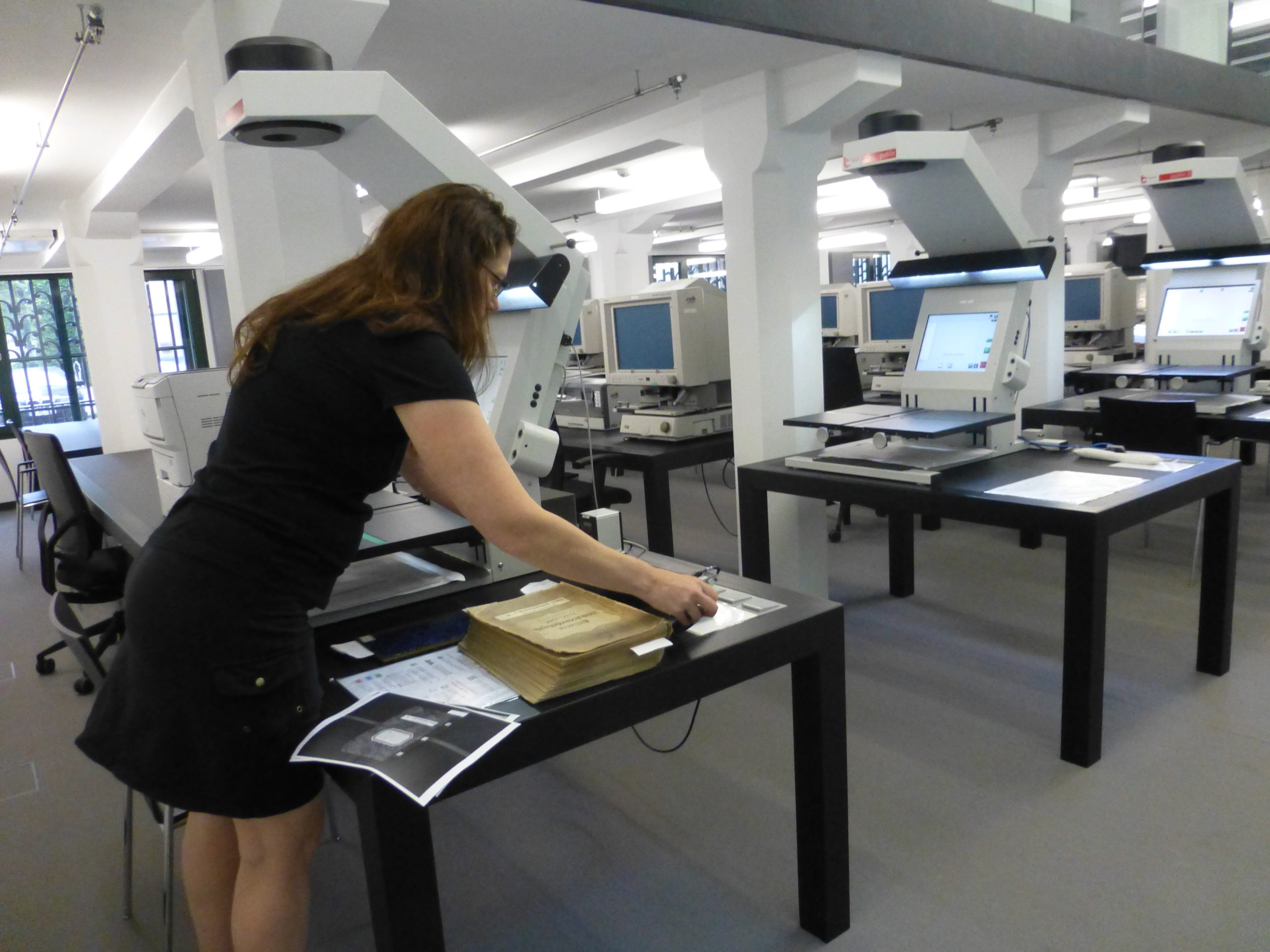
St. Heinrich's Medaille Award Records
Saxon Staatsarchiv, Dresden, 2015Researching, with Charley, the Saxon records detailing how Charley's father and grandfather won the highest medal for bravery in the Saxon Army in 1870-71 and World War I.
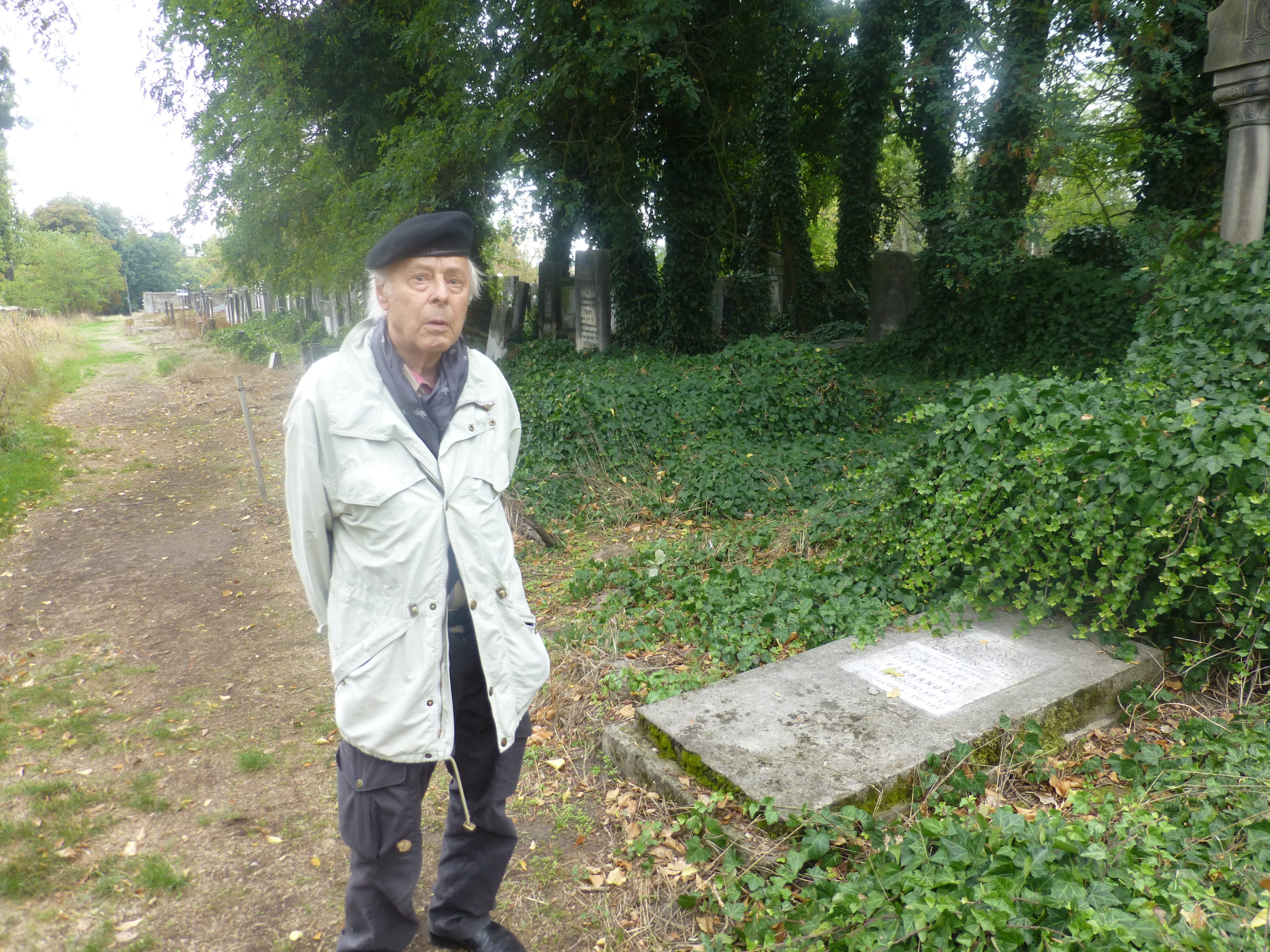
Jewish Cemetery in Lodz
Litzmannstadt Ghetto, 2015Charley and I visit the Jewish cemetery in Lodz, Poland, where many German Jews were deported and where tens of thousands suffered horrifically and died. We are deeply affected.
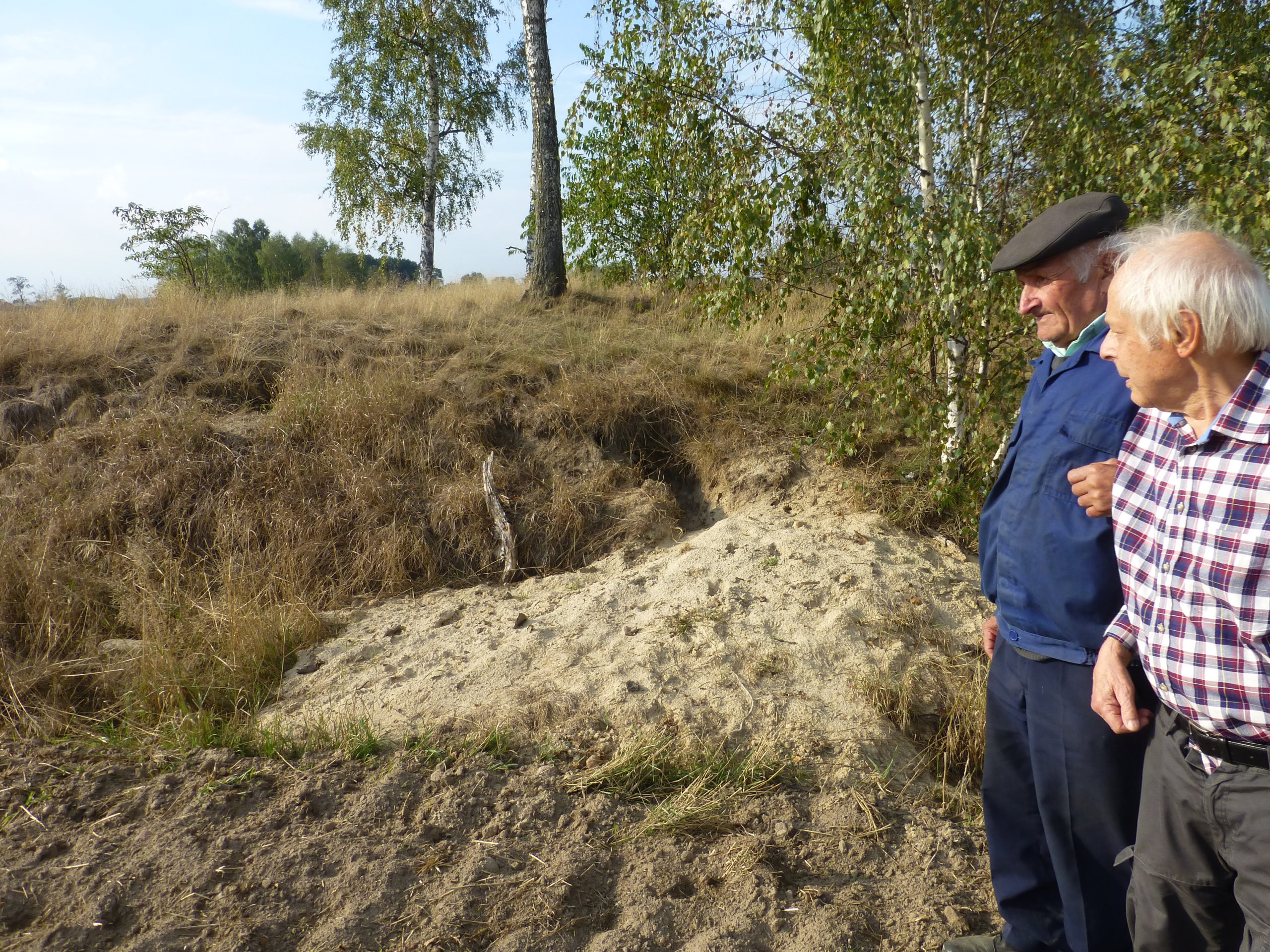
Visiting the WWI Polish Battlefield
Where Charley's Father was WoundedAlthough Josef could speak neither English nor German, and we had no Polish, he very kindly brought us to the graves of the German WWI soldiers who were killed 100 years before in 1915 when Charley's father was seriously wounded fighting the Russians in WWI. Charley's father lost an eye, and many of his teeth, and suffered what we think were symptoms Traumatic Brain Injury until his premature death in the 1930's.
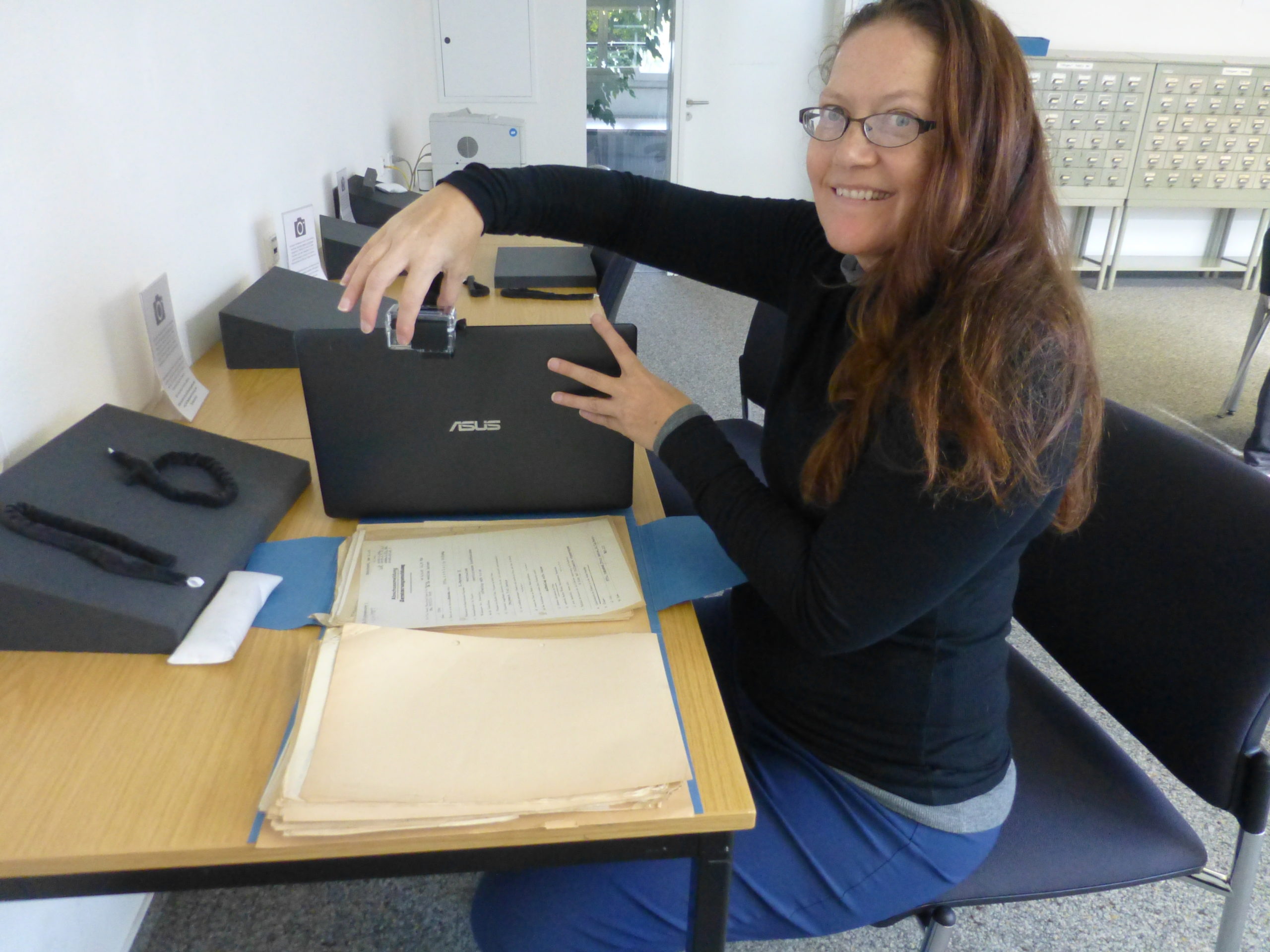
Researching in Freiburg
At the German National Military ArchivesCharley and I dive deep into the records at the Bundesarchiv-Militaerarchiv in Freiburg, Germany in 2016.
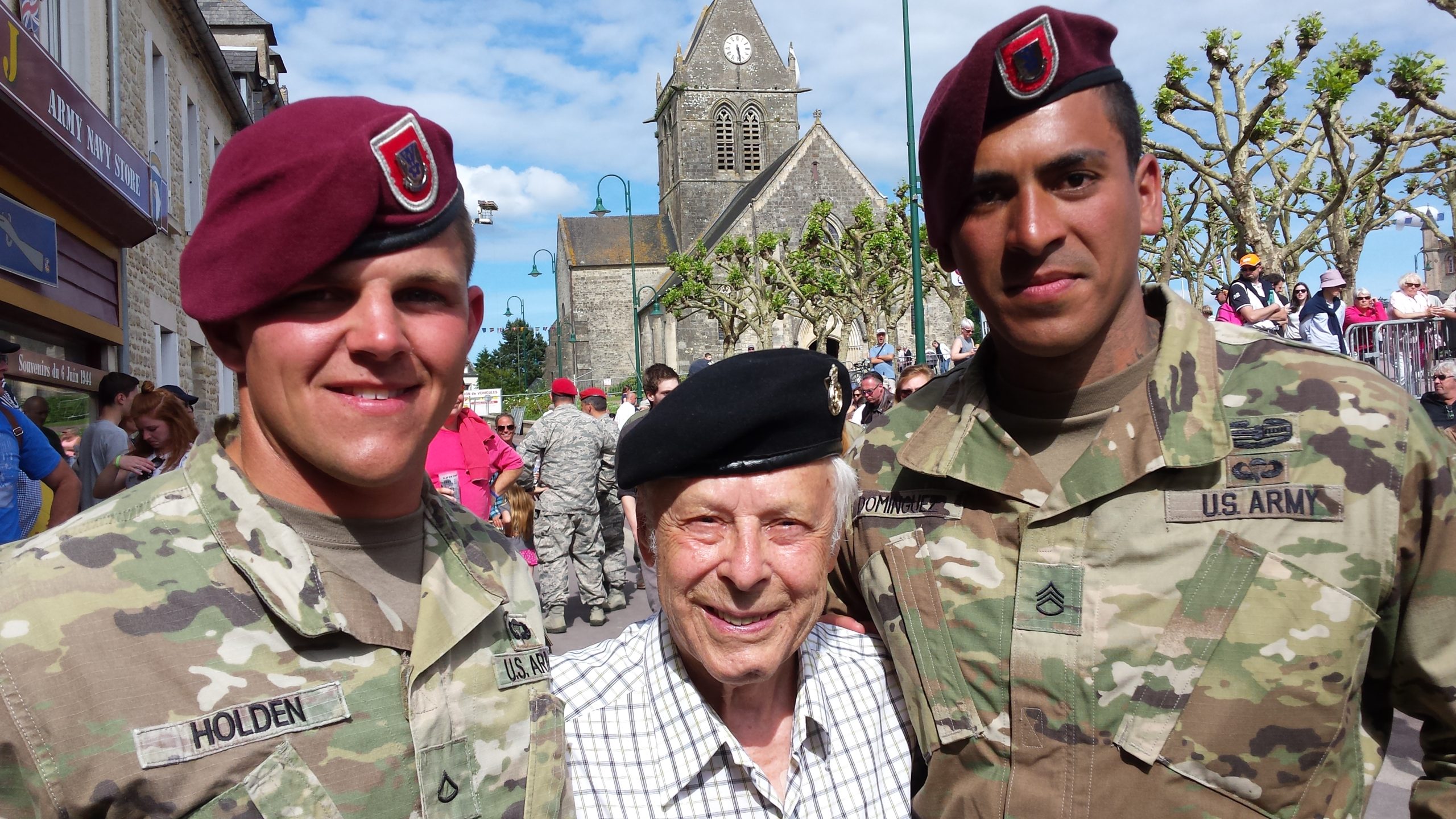
D-Day Commemorations
St. Mere Eglise, Normandy, 2017Charley and American paratroopers who had dropped near St. Mere Eglise for the D-Day commemorationss.
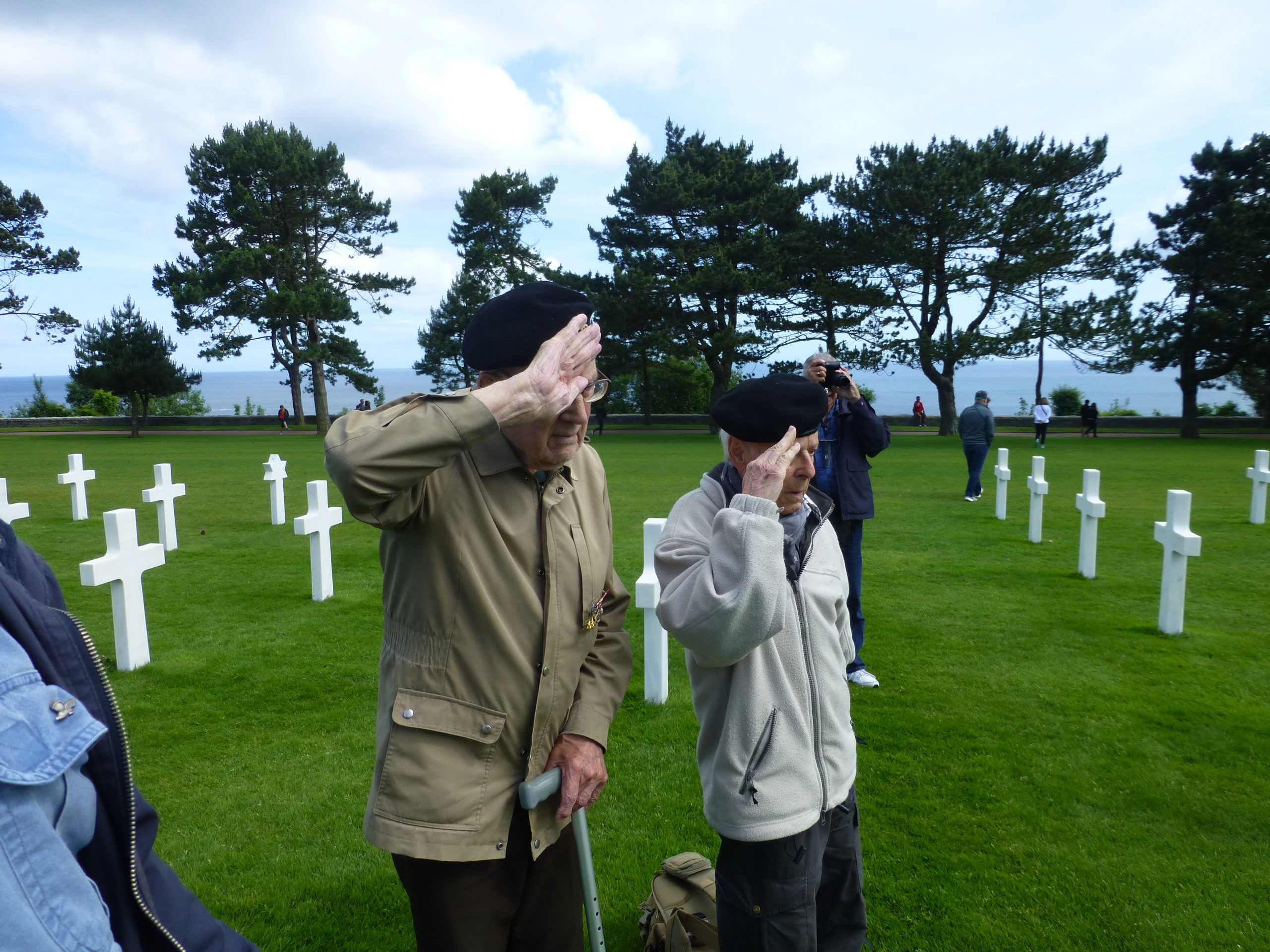
American Cemetery 2017
Colleville-sur-Mer, NormandyGraham Stevenson, who fought between the ages of 17 and 19 with the Sherwood Rangers Tank Regiment in Africa, and who was badly wounded by a German machine gun on his first day in combat in Normandy, and Charley Koenig, 5th Panzer Regiment, Africa Corps, salute American war dead.
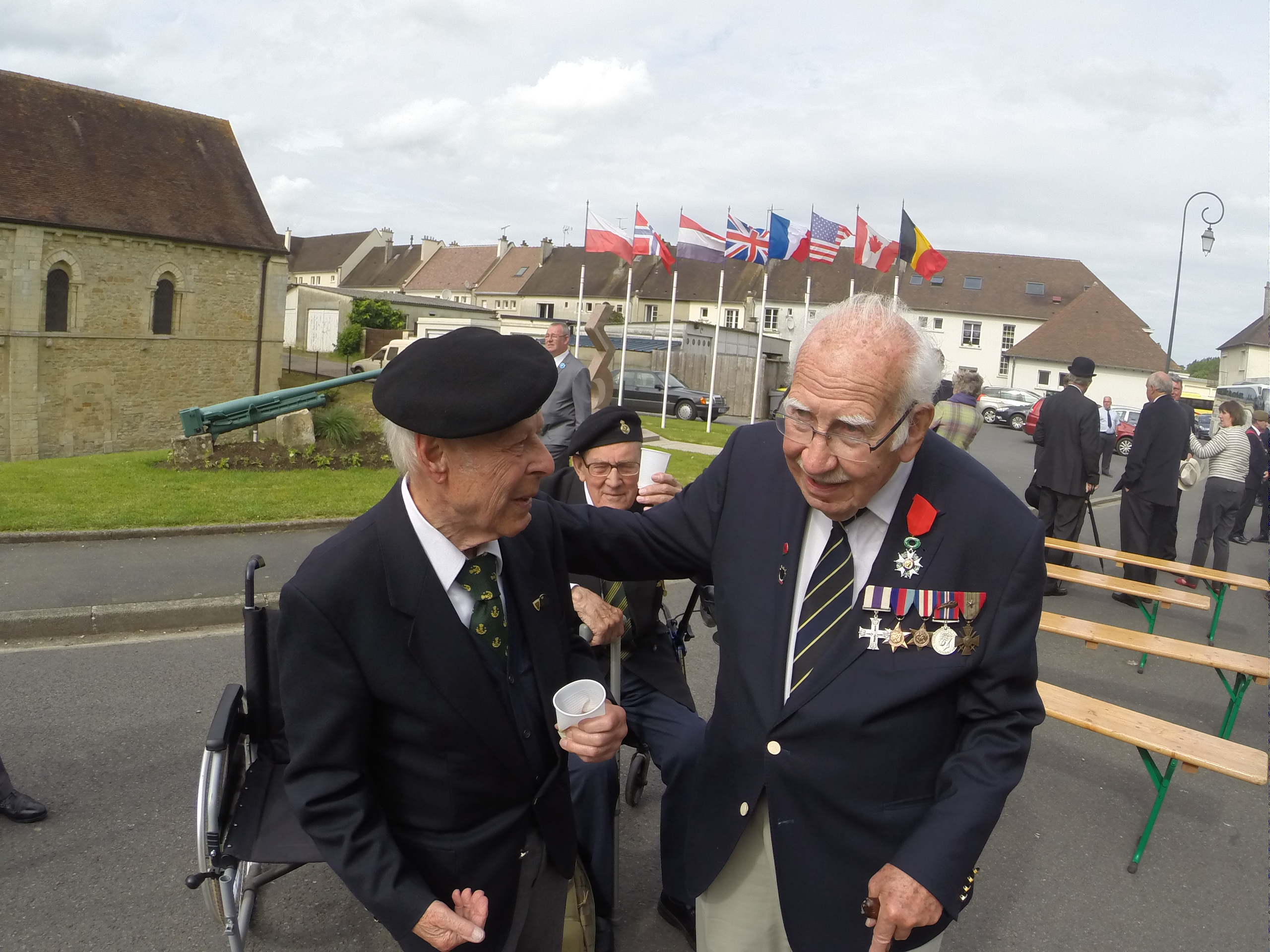
Bob Filby, A New Friend
Tilly-sur-Seulles, Normandy, 2017Charley, Graham, and new friend Bob Filby, of the Essex Regiment, in Tilly-sur-Seulles, a most sacred place, where the Sherwood Rangers Tank Regiment lost Colonel Major M.H. Laycock, MC, Capt. G. A. Jones, and Lt. A. L. Head to a direct hit from a German 105mm shell on June 11, 1944.
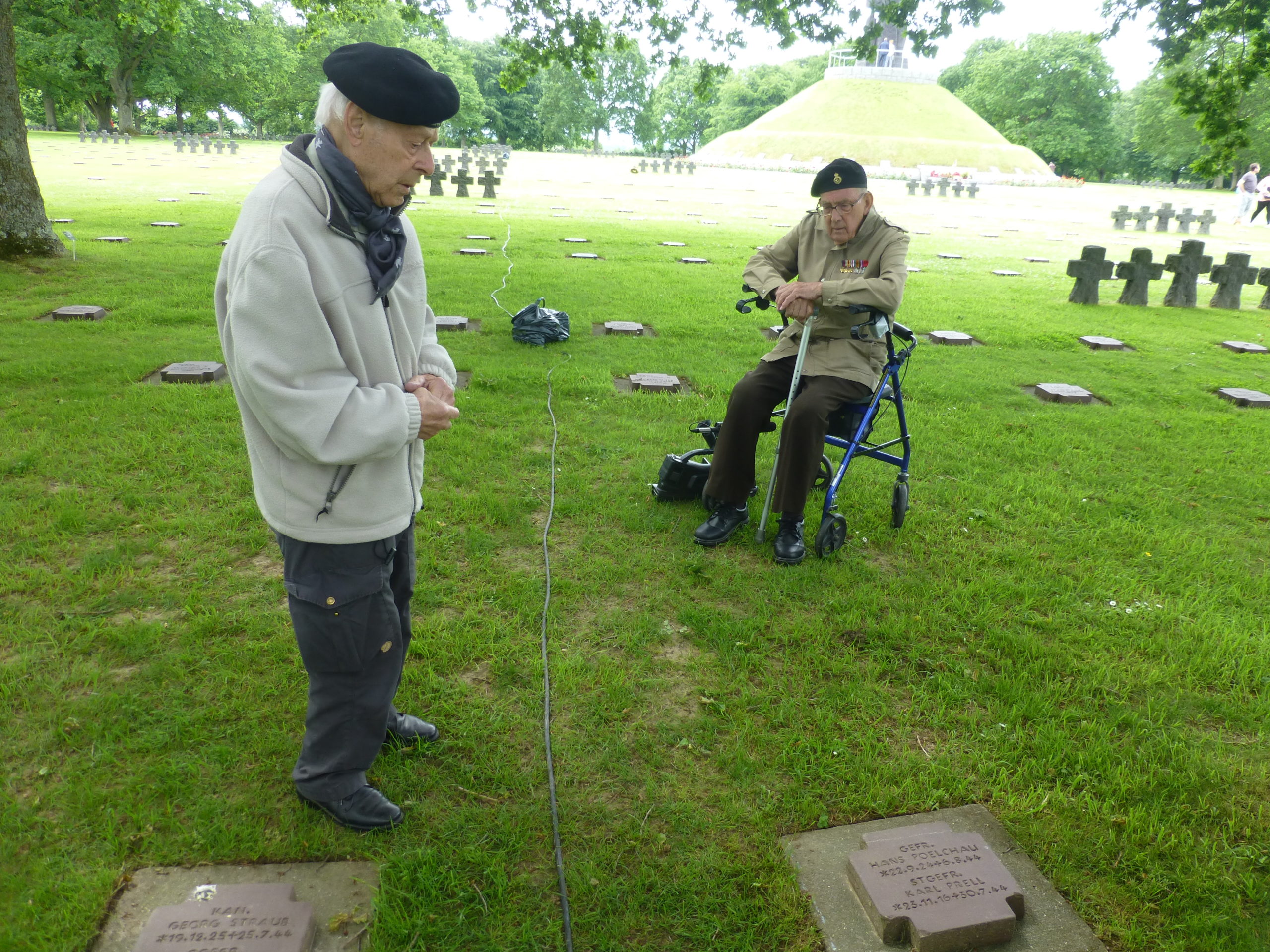
Visiting Hans Poelchau's Grave
La Cambe, Normandy, 2017Charley and Graham visit the grave of Charley's close childhood friend and next-door neighbor, Hans Poelchau, whose mother was Jewish. Hans was then considered half-Jewish by the Nazis. Although according to the documentation we could find, Hans had been arrested and probably tortured by the Gestapo in Hamburg, he still died fighting in the German Army in Normandy in the summer of 1944, probably to protect his mother from deportation.
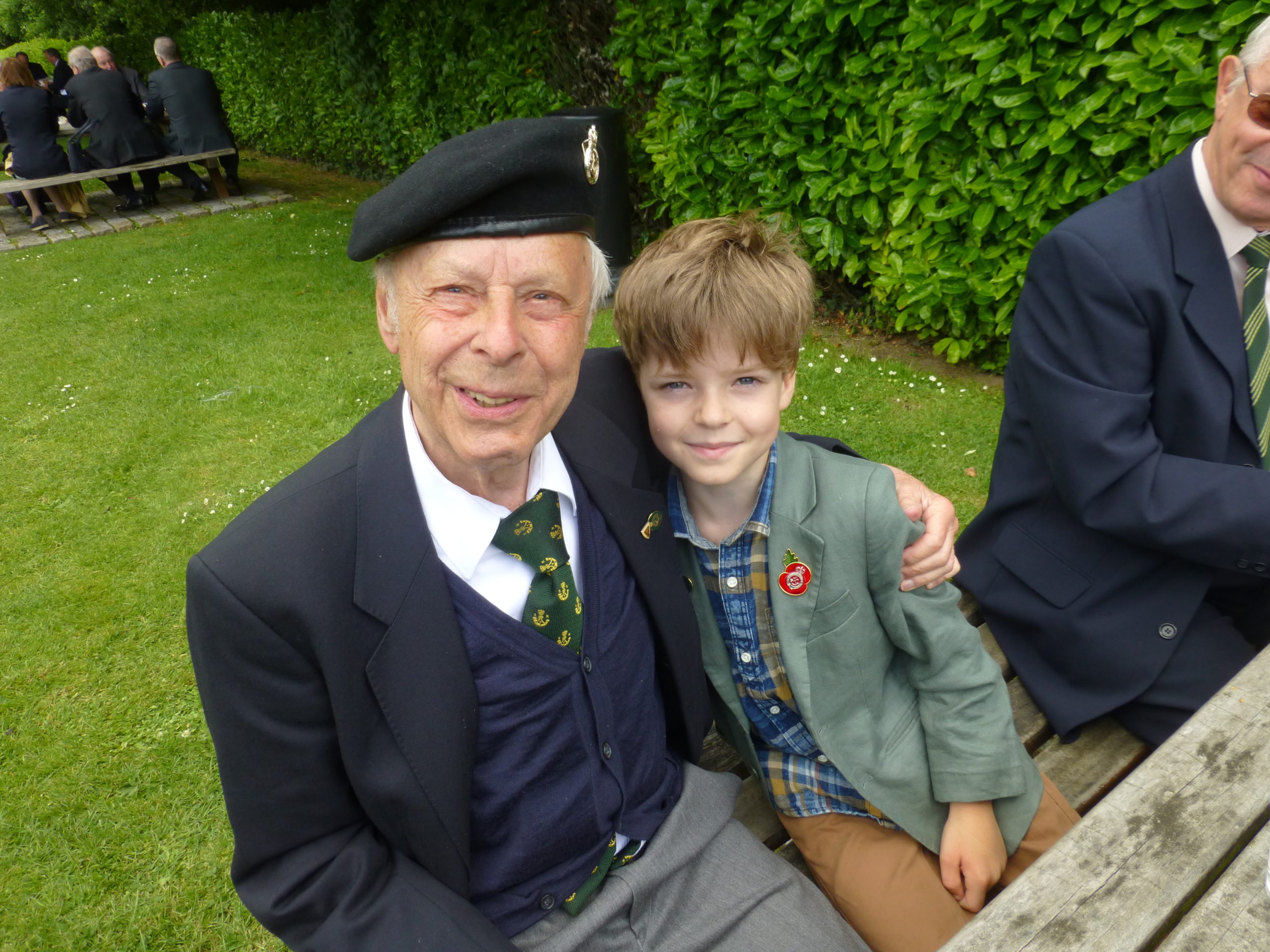
Honor and Respect
from a British lad, 2017No young Germans were ever encouraged to ask Charley about his service. Here, a young British lad named Joe wants to hear more about the German veteran who is a member of the Sherwood Rangers Tank Regiment. This connection, this sort of balm for the soul, which was needed and wanted so badly, was generally withheld from German veterans. It was deeply meaningful for Charley.
